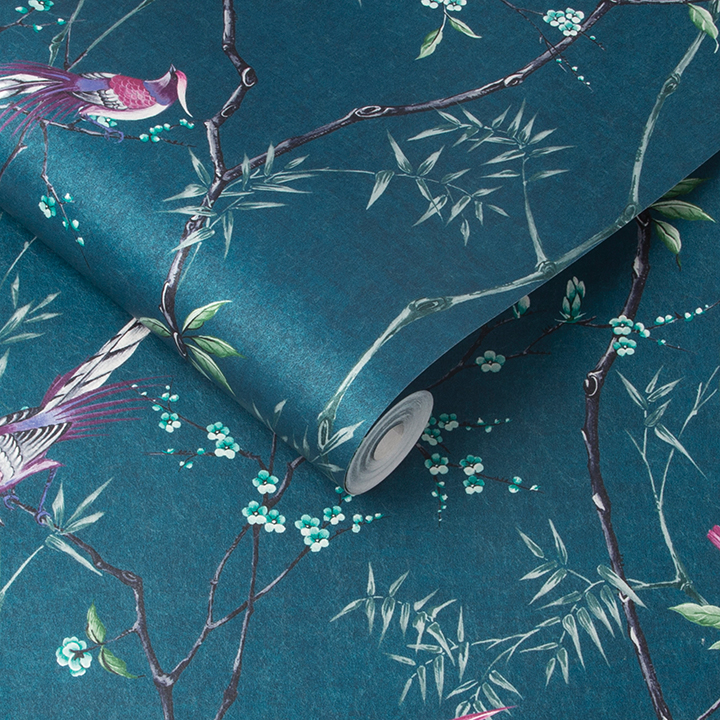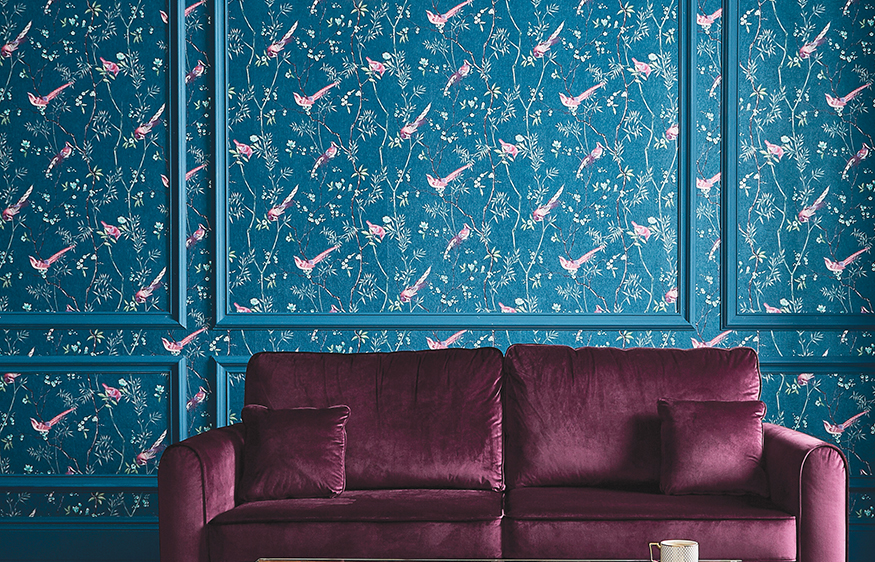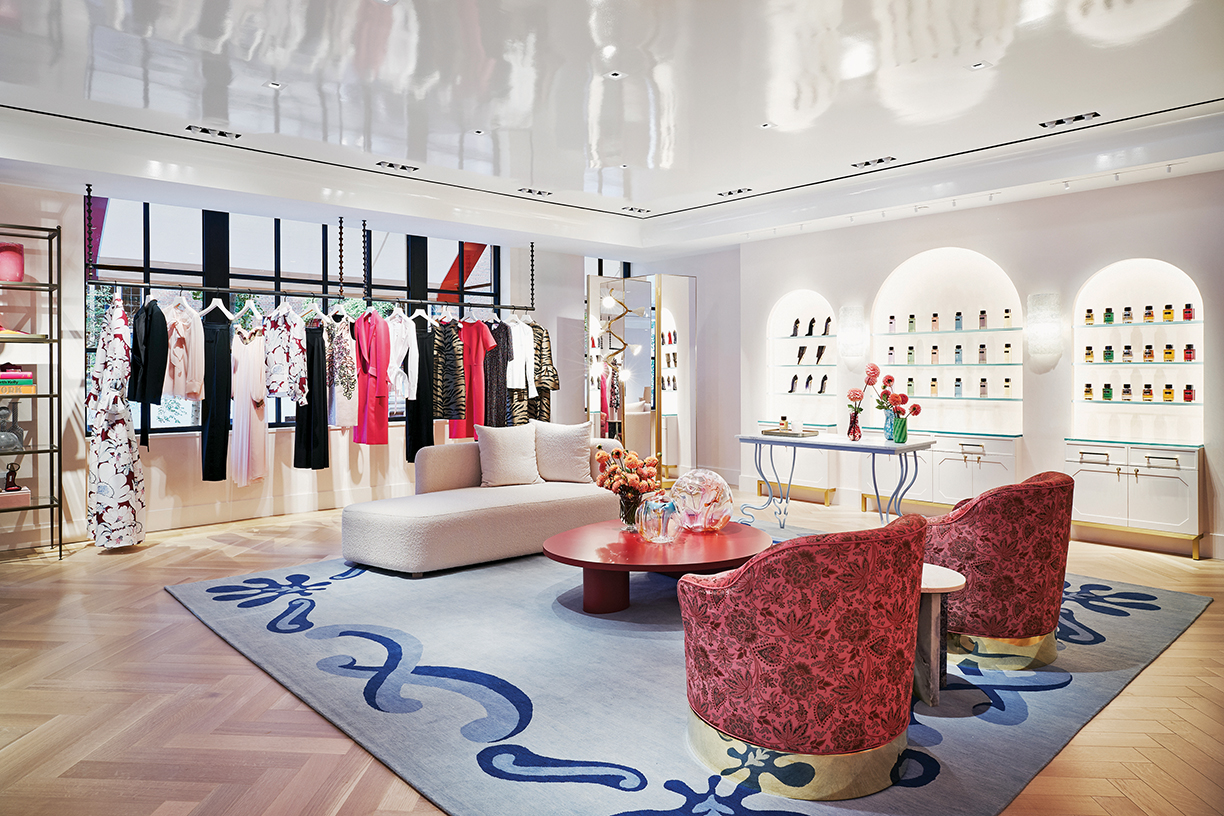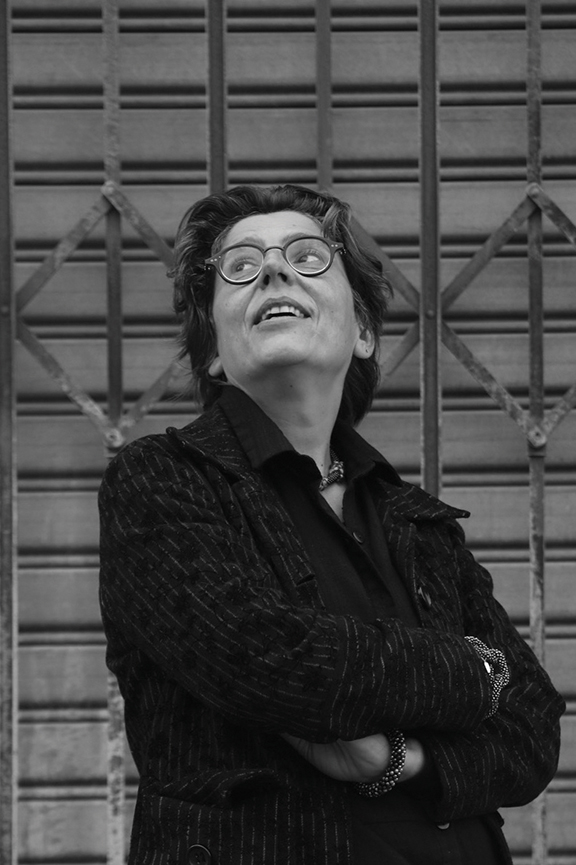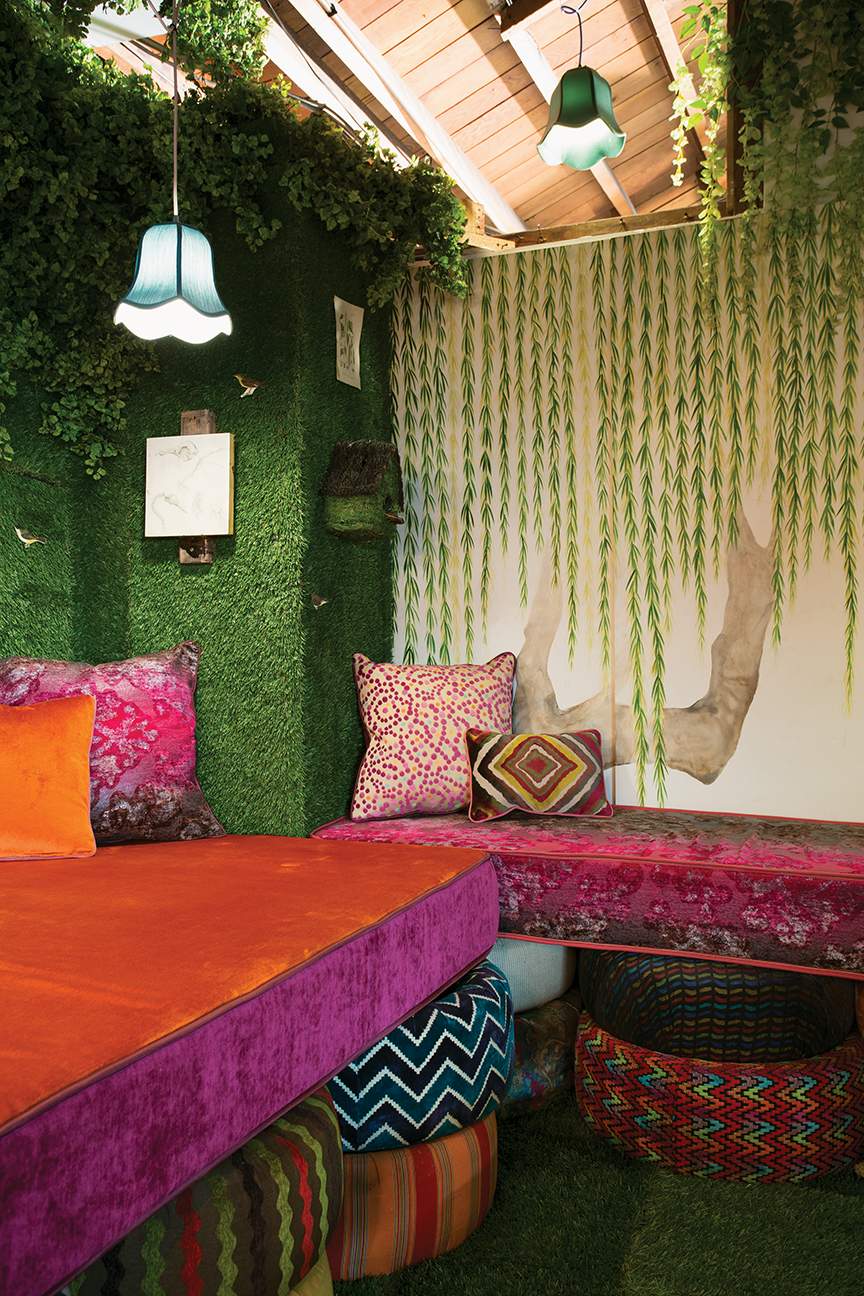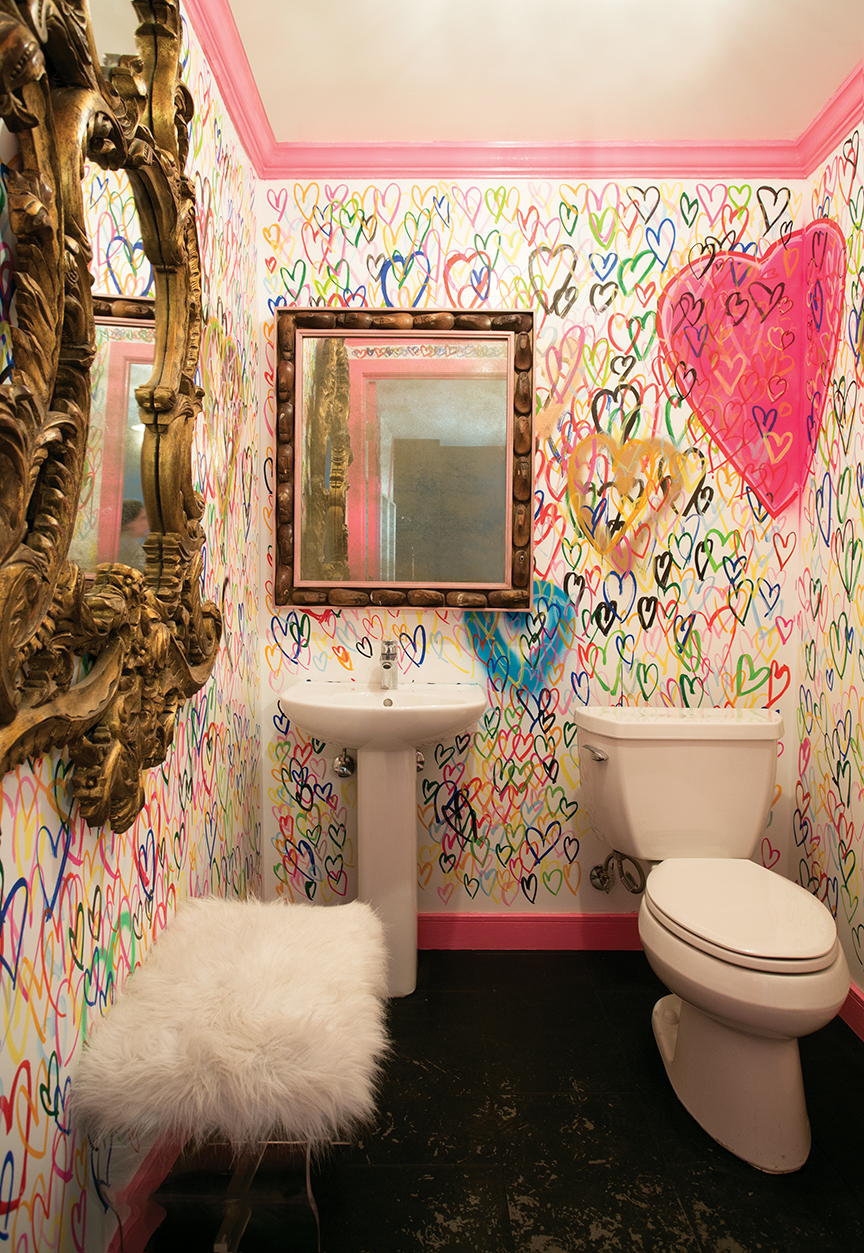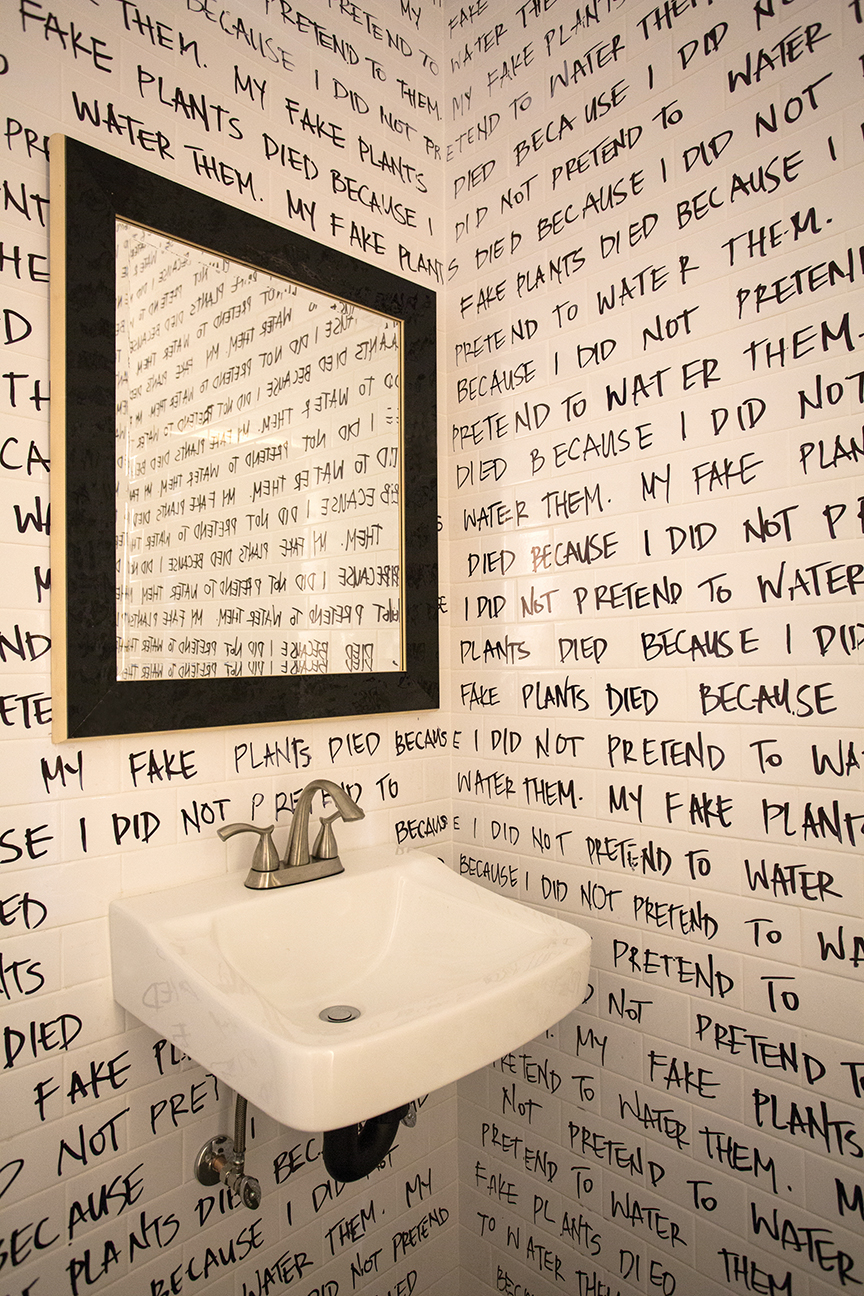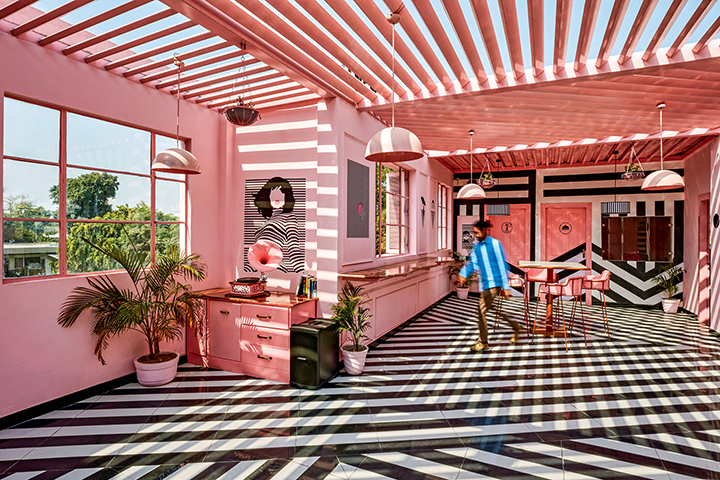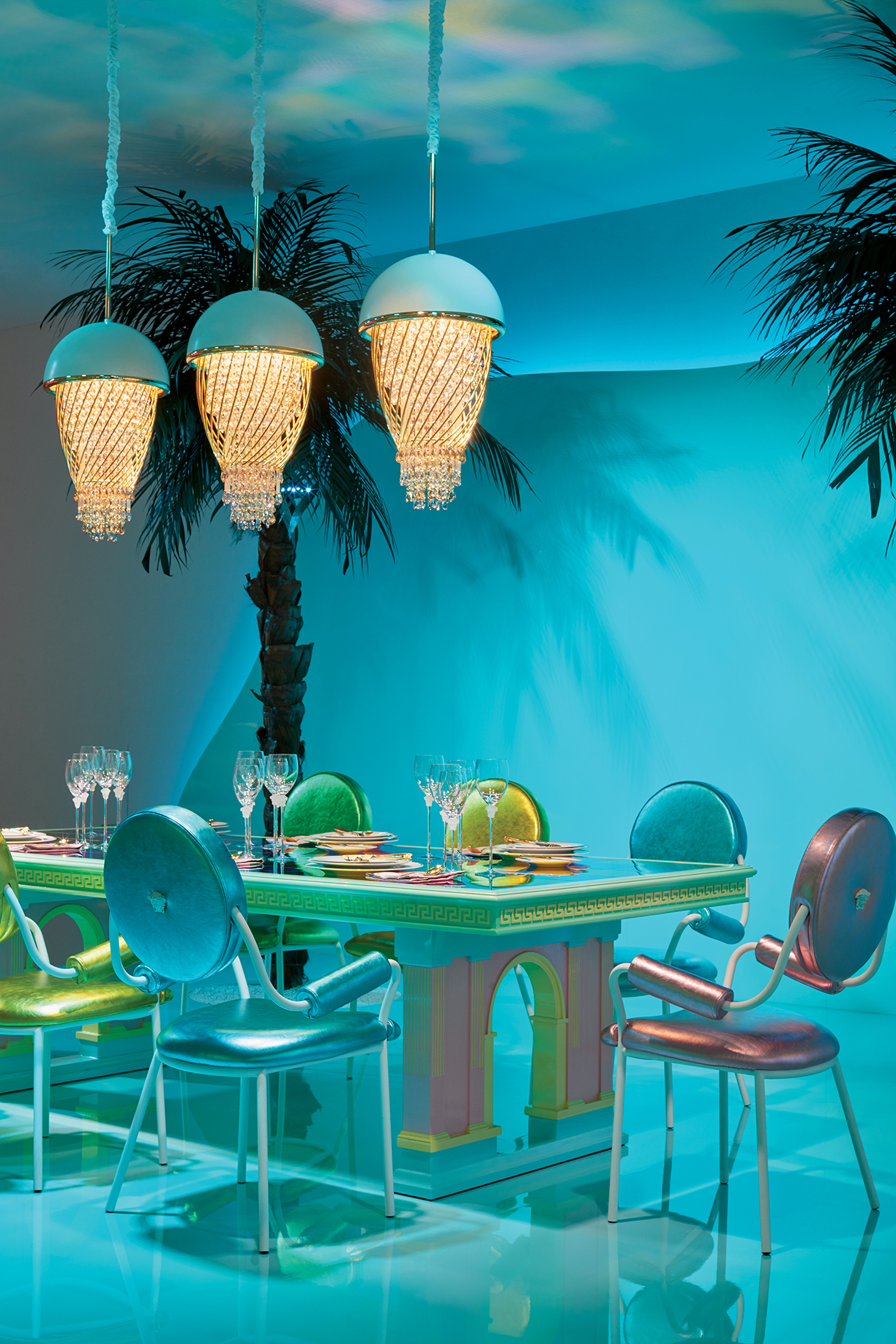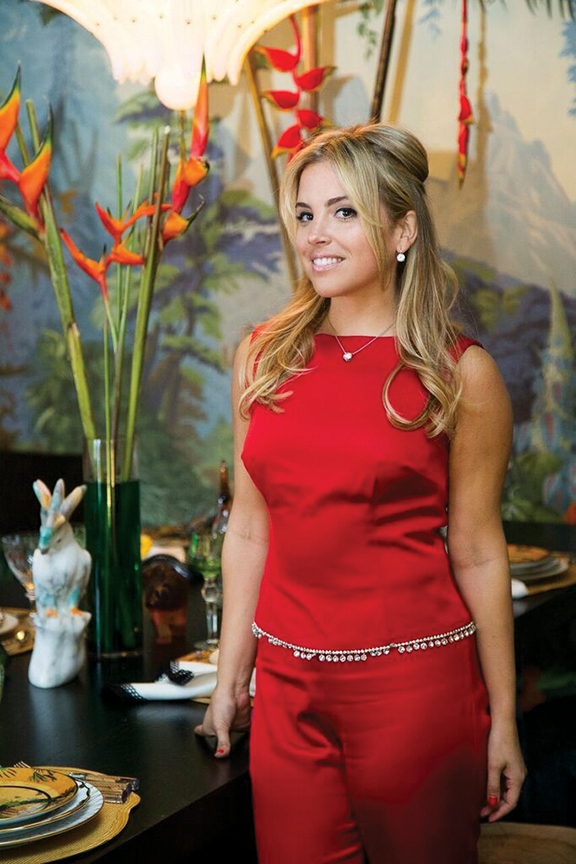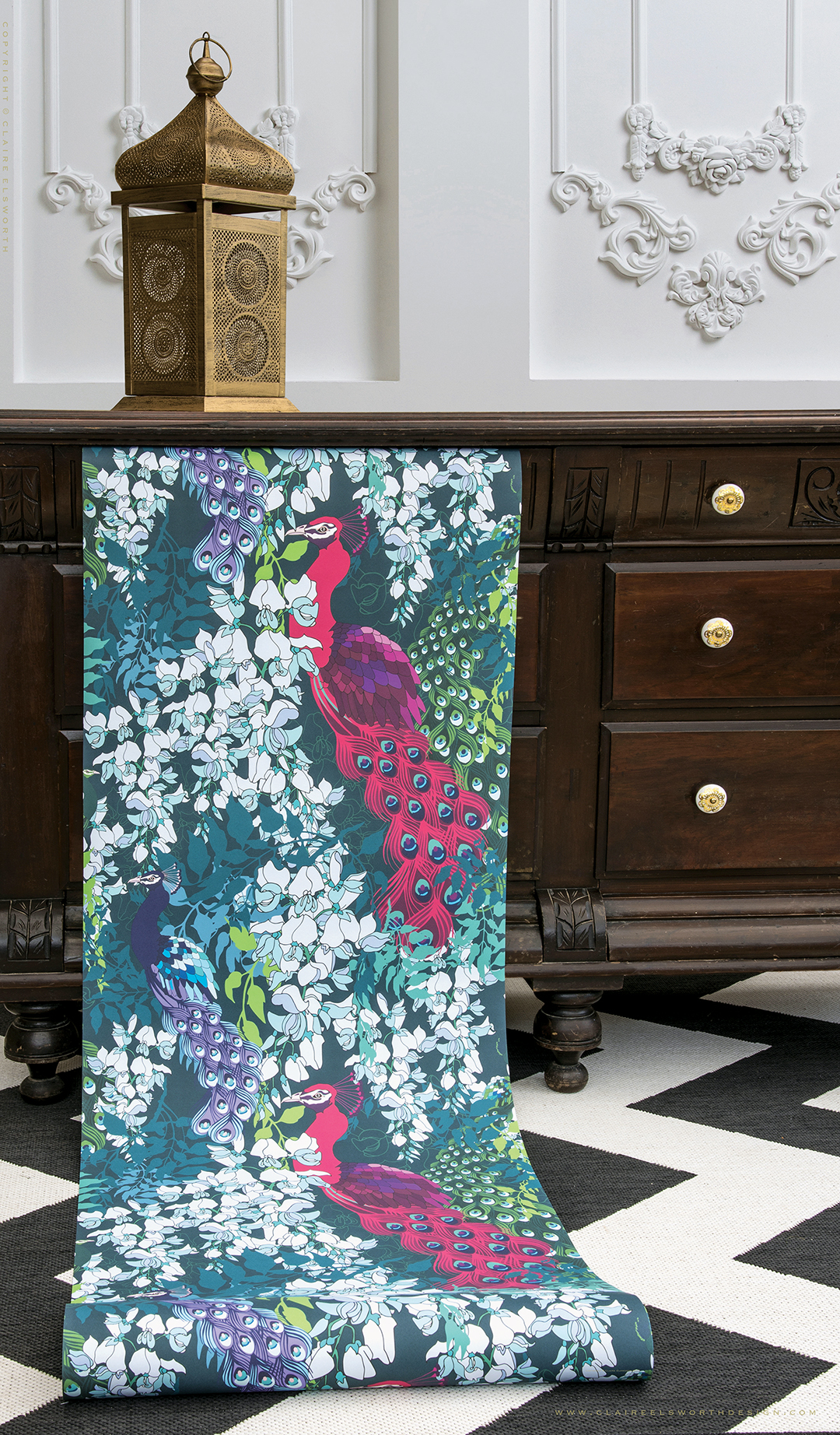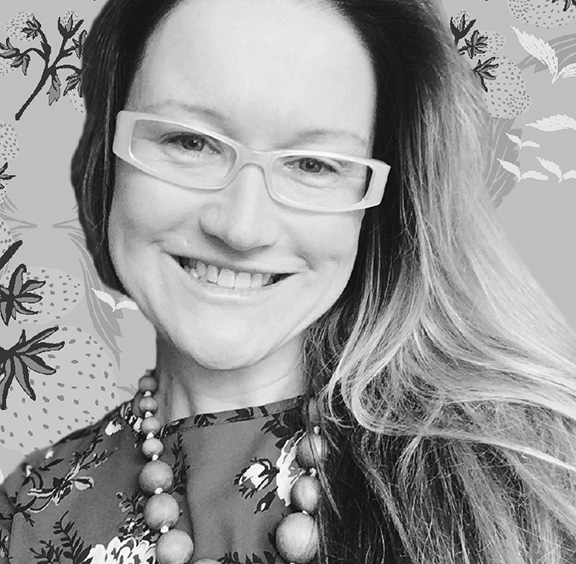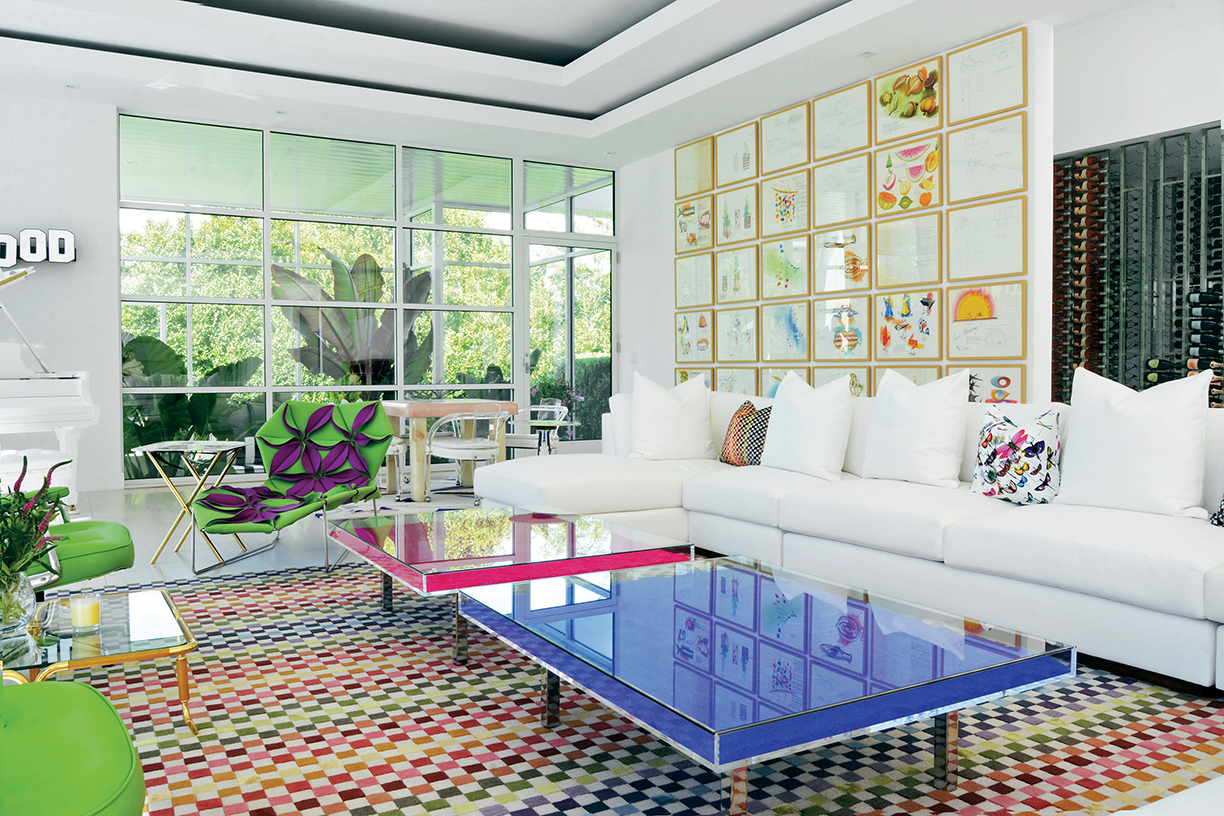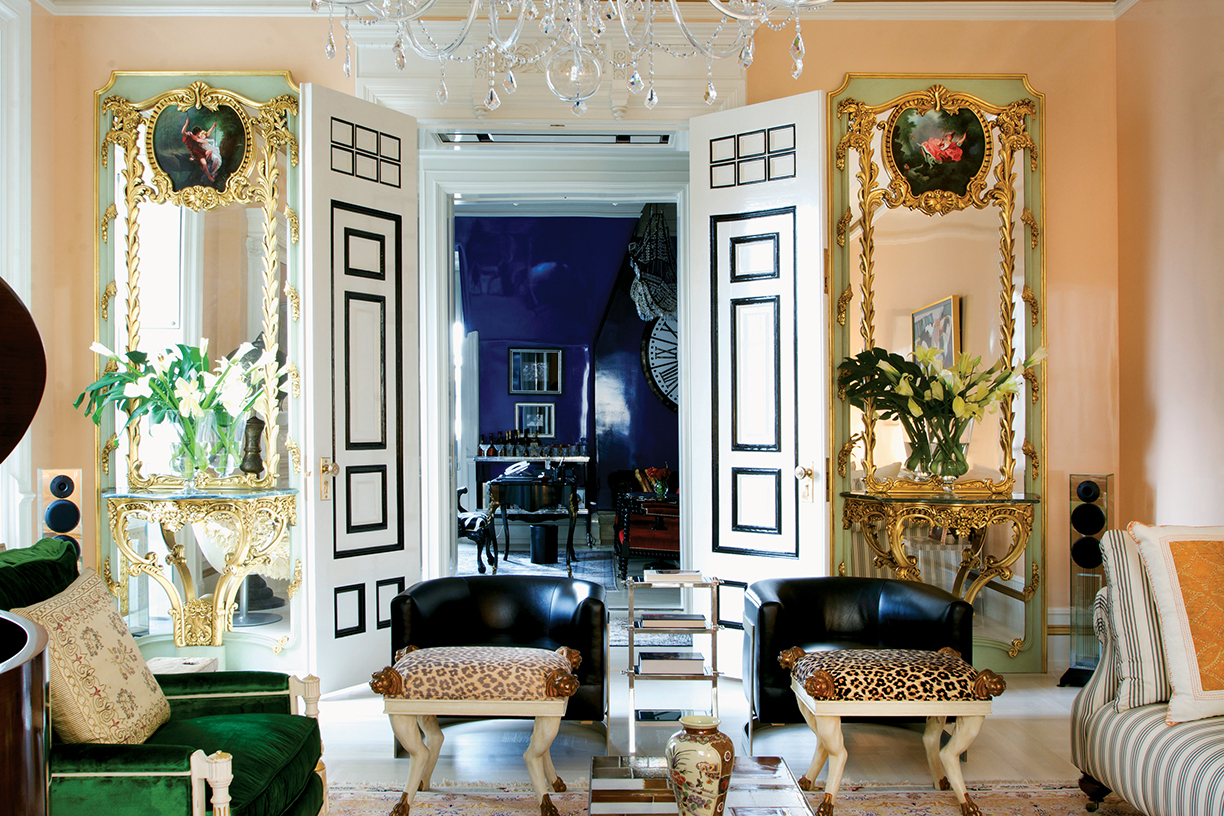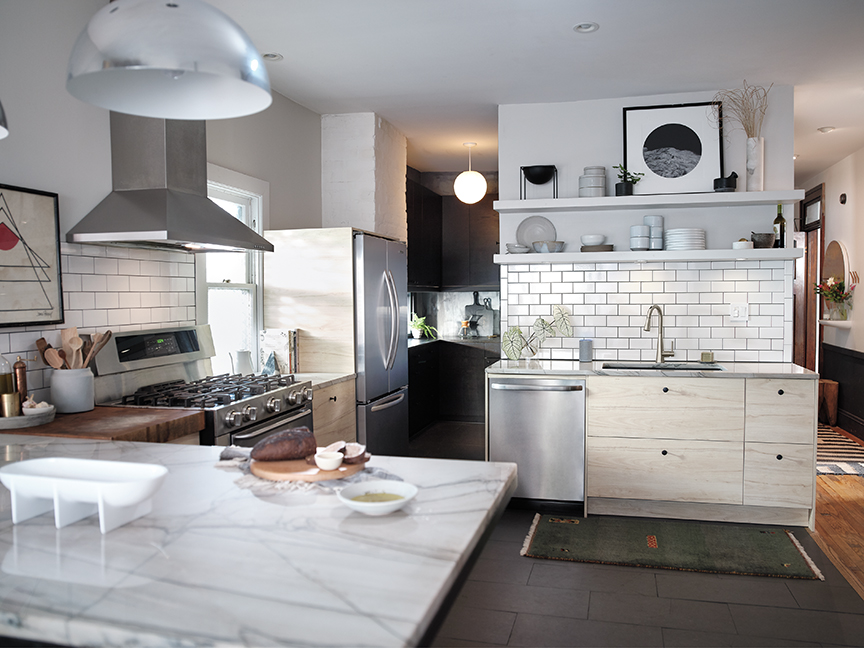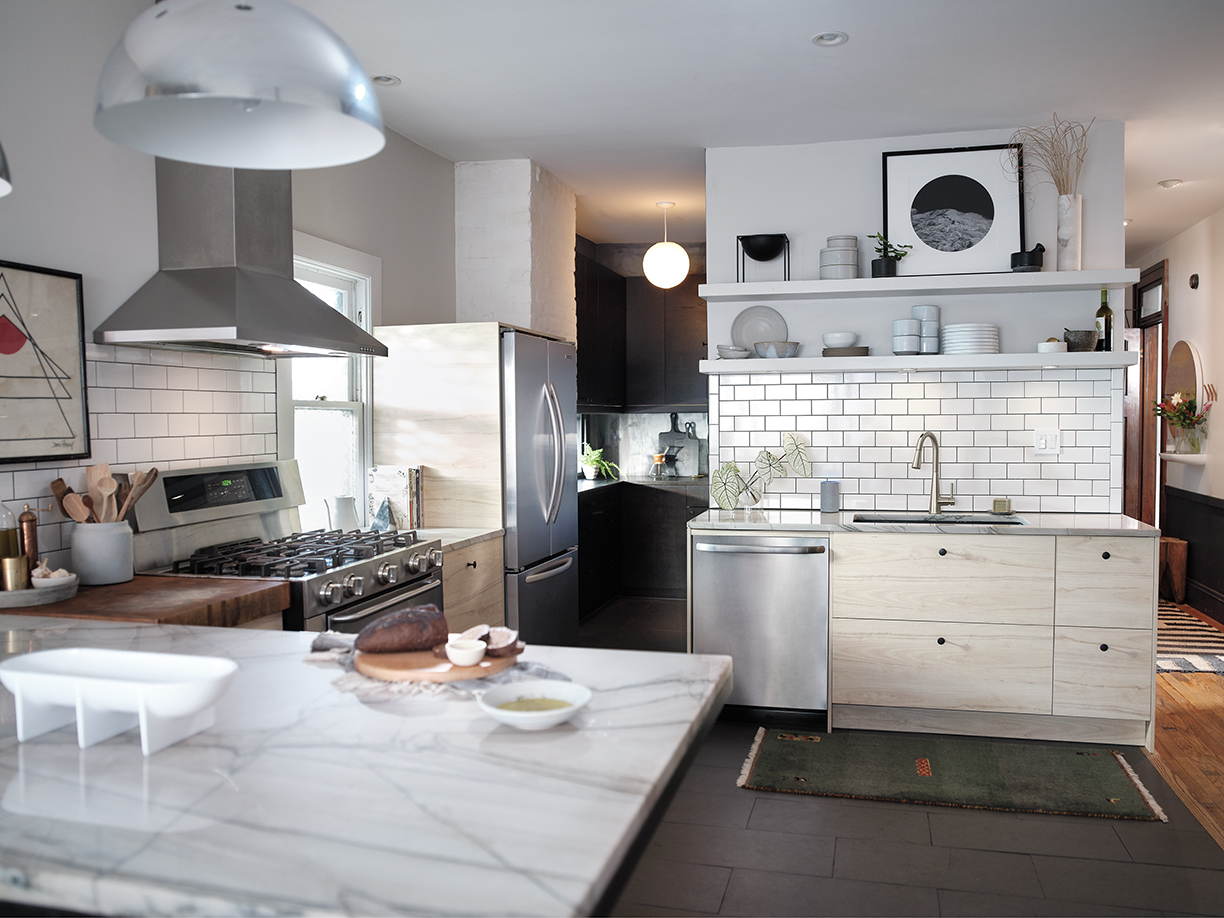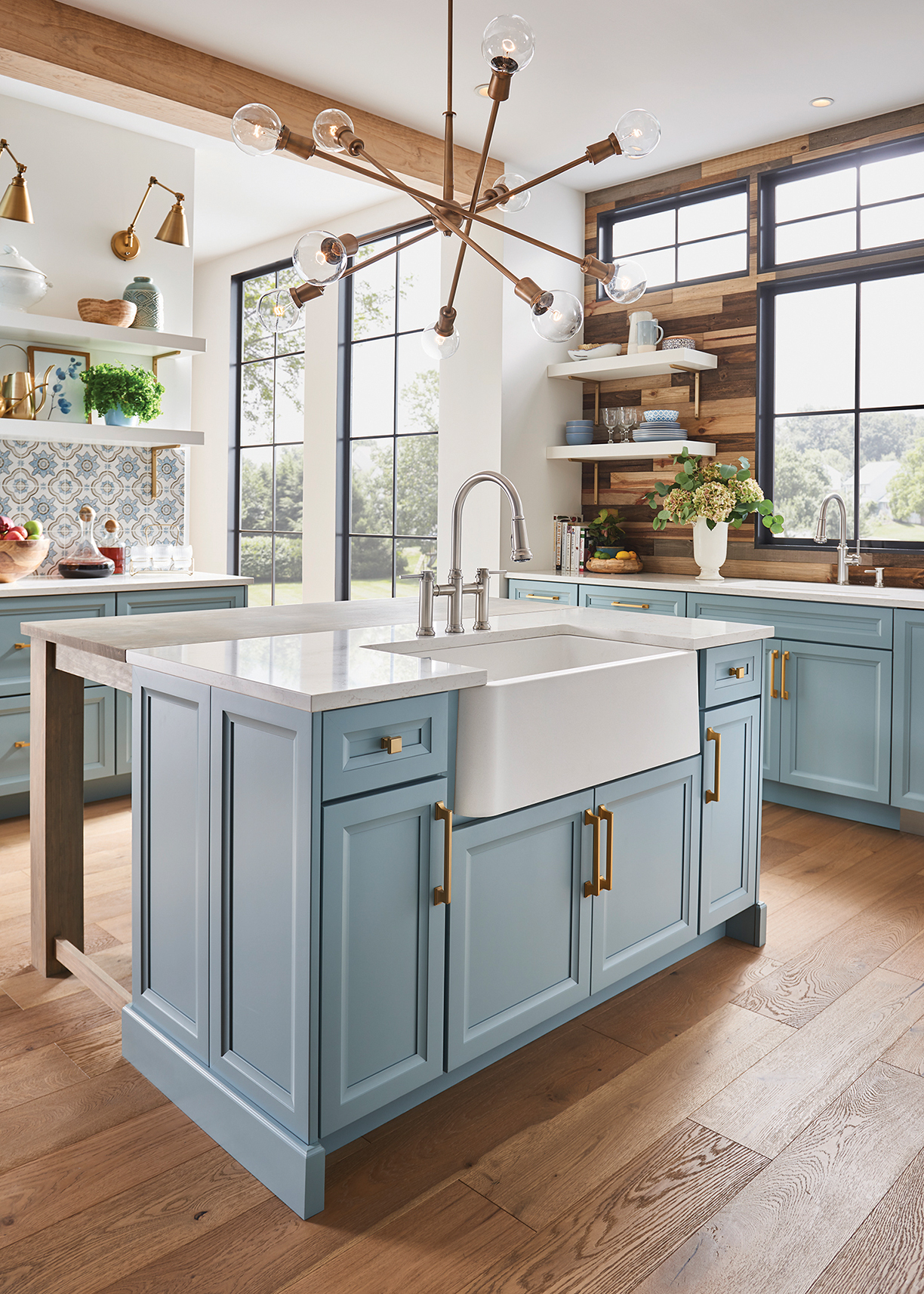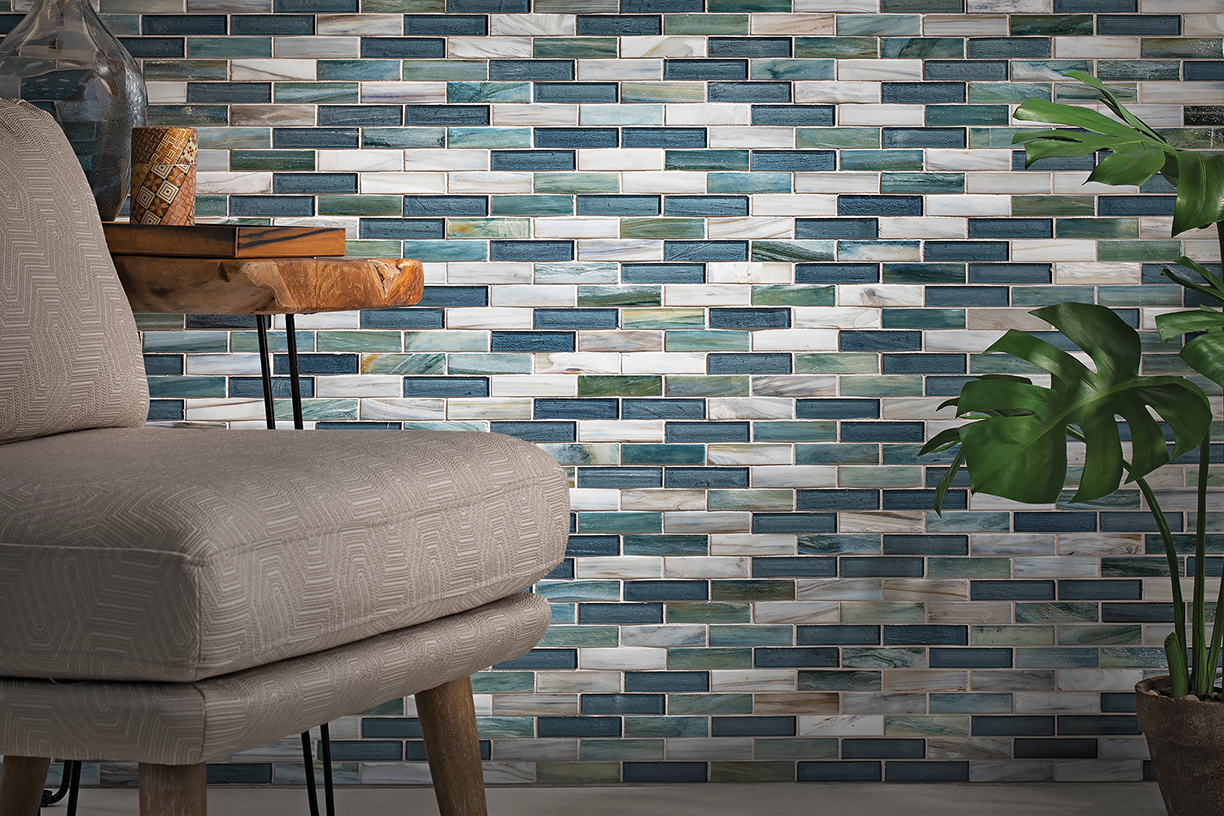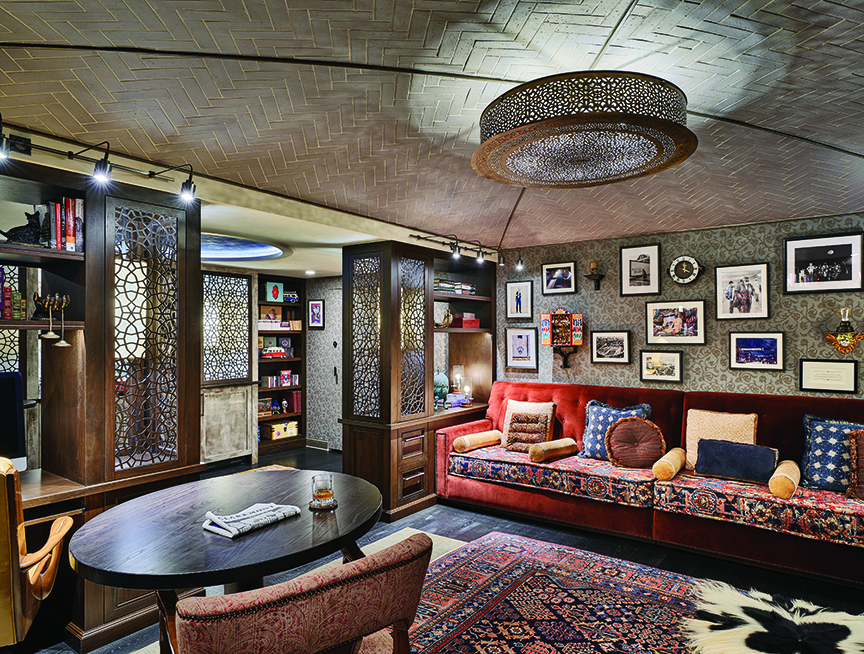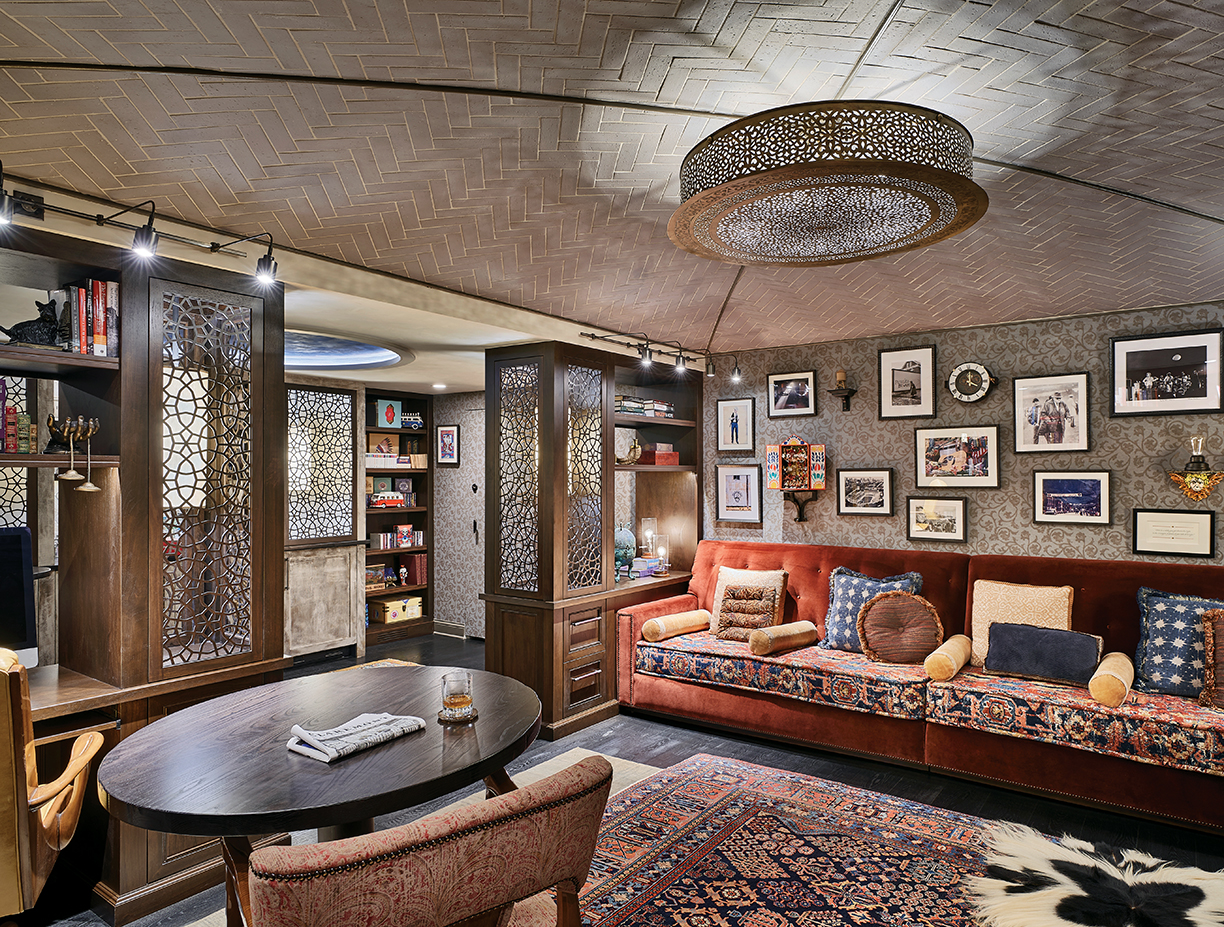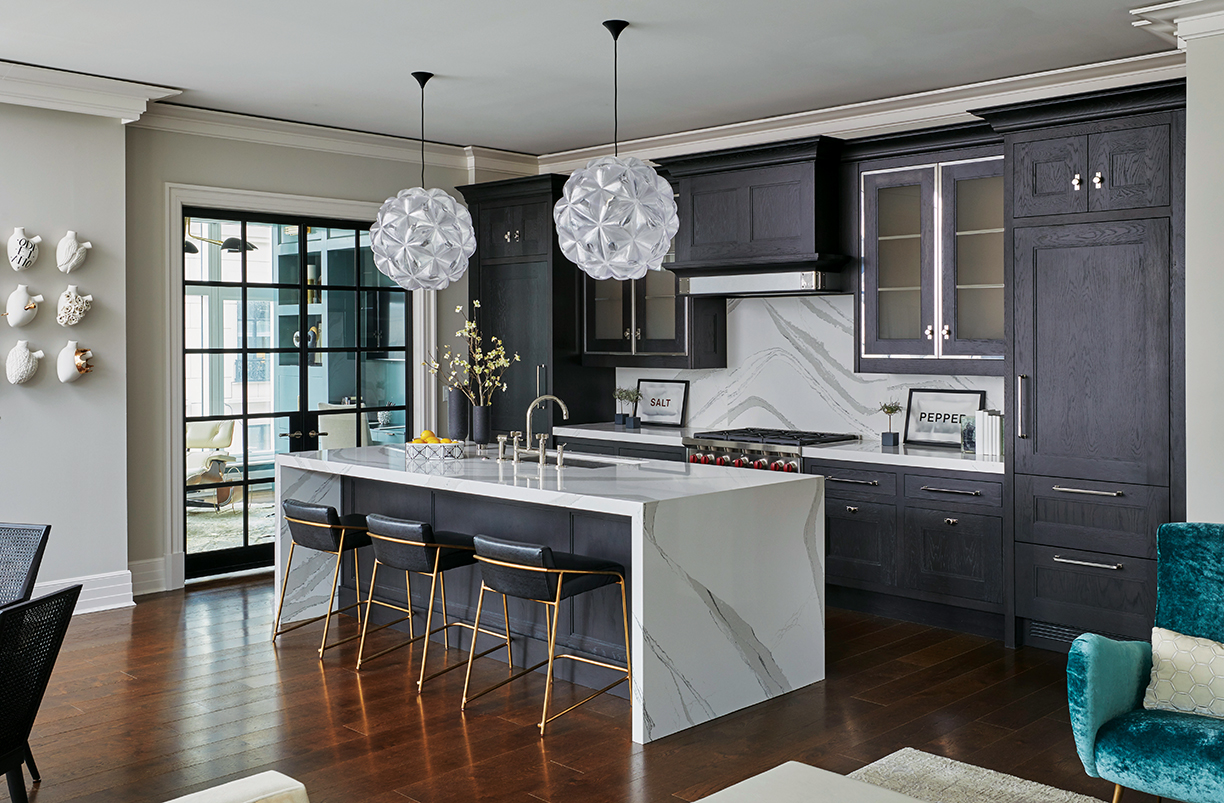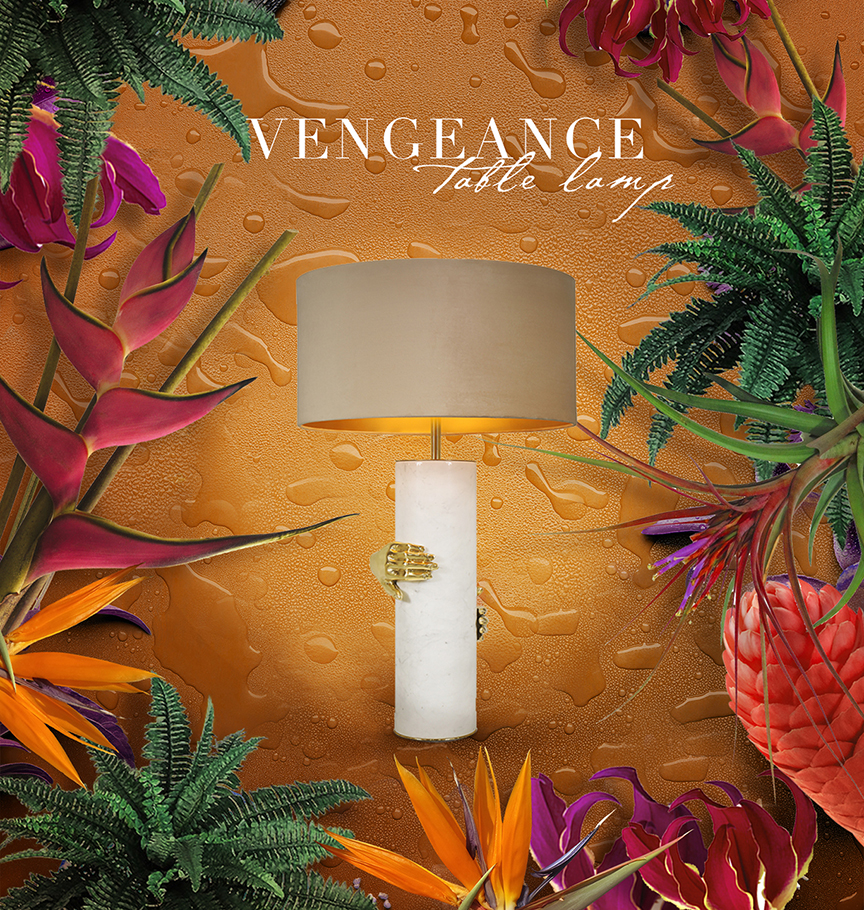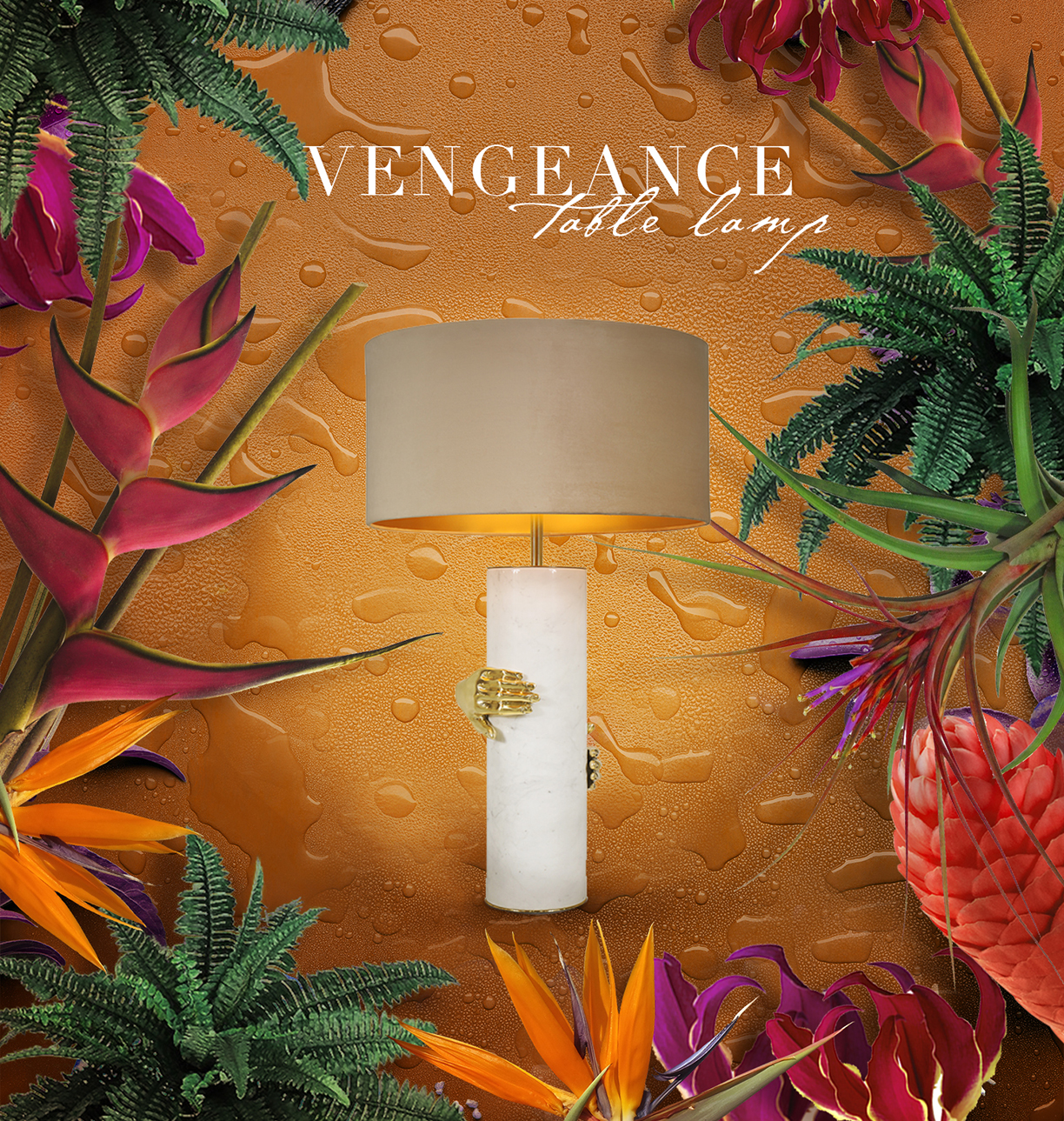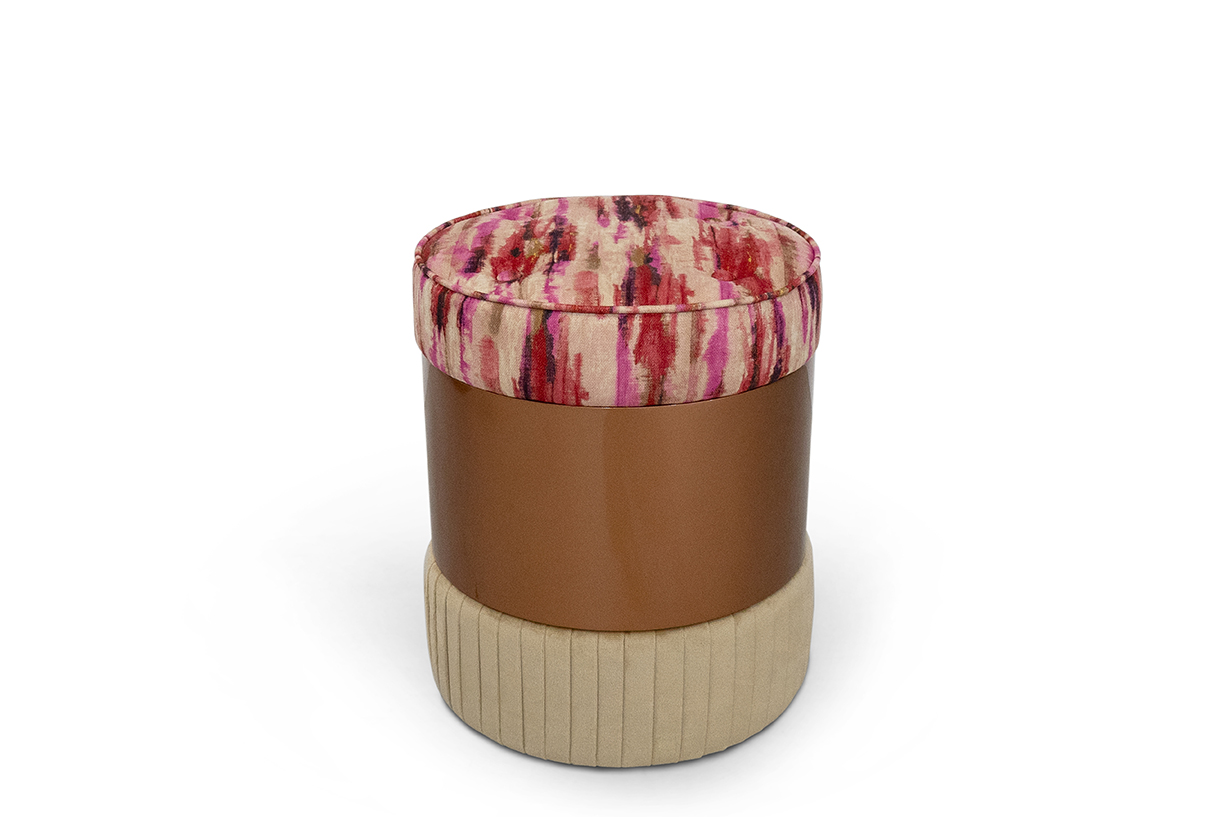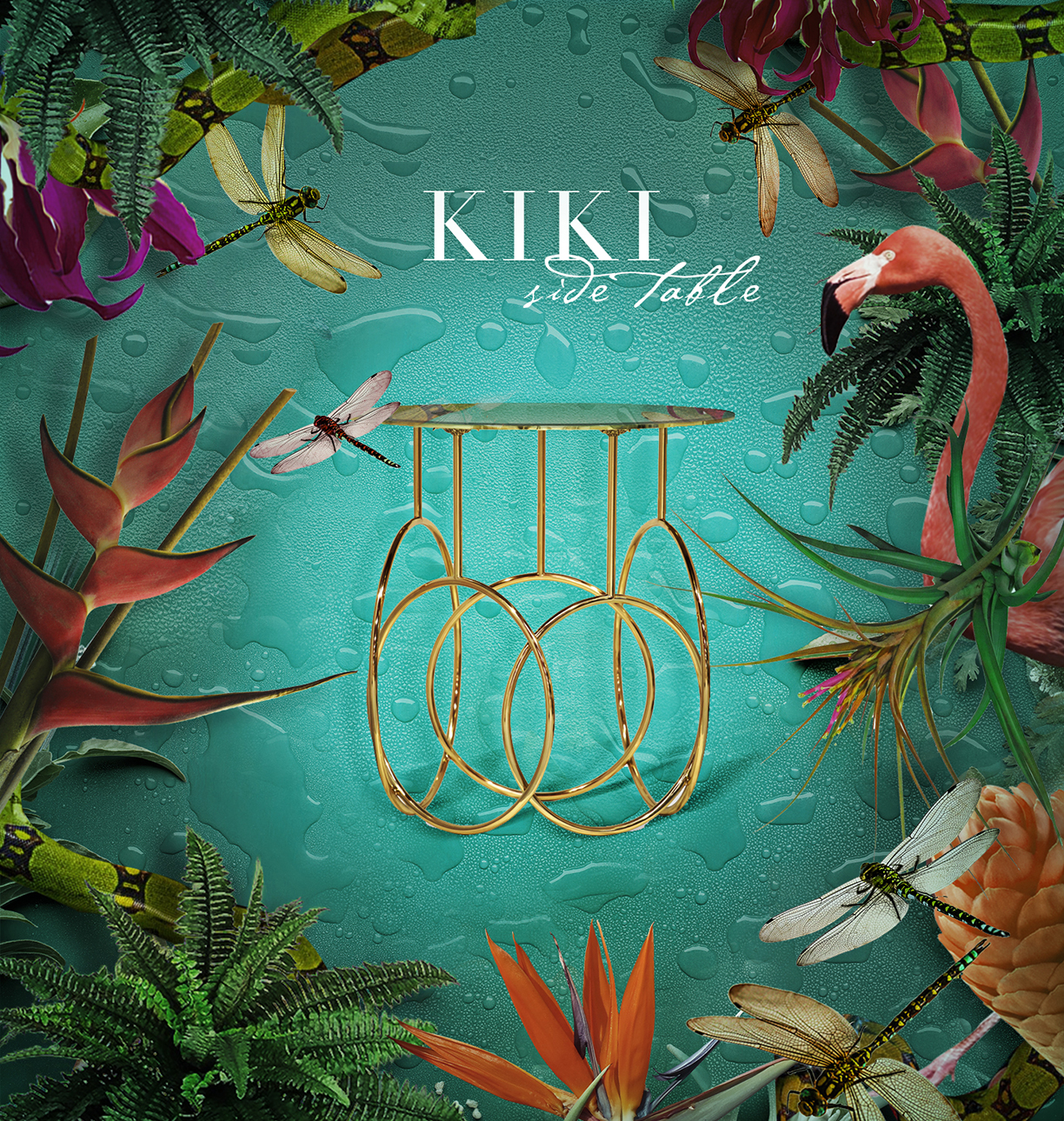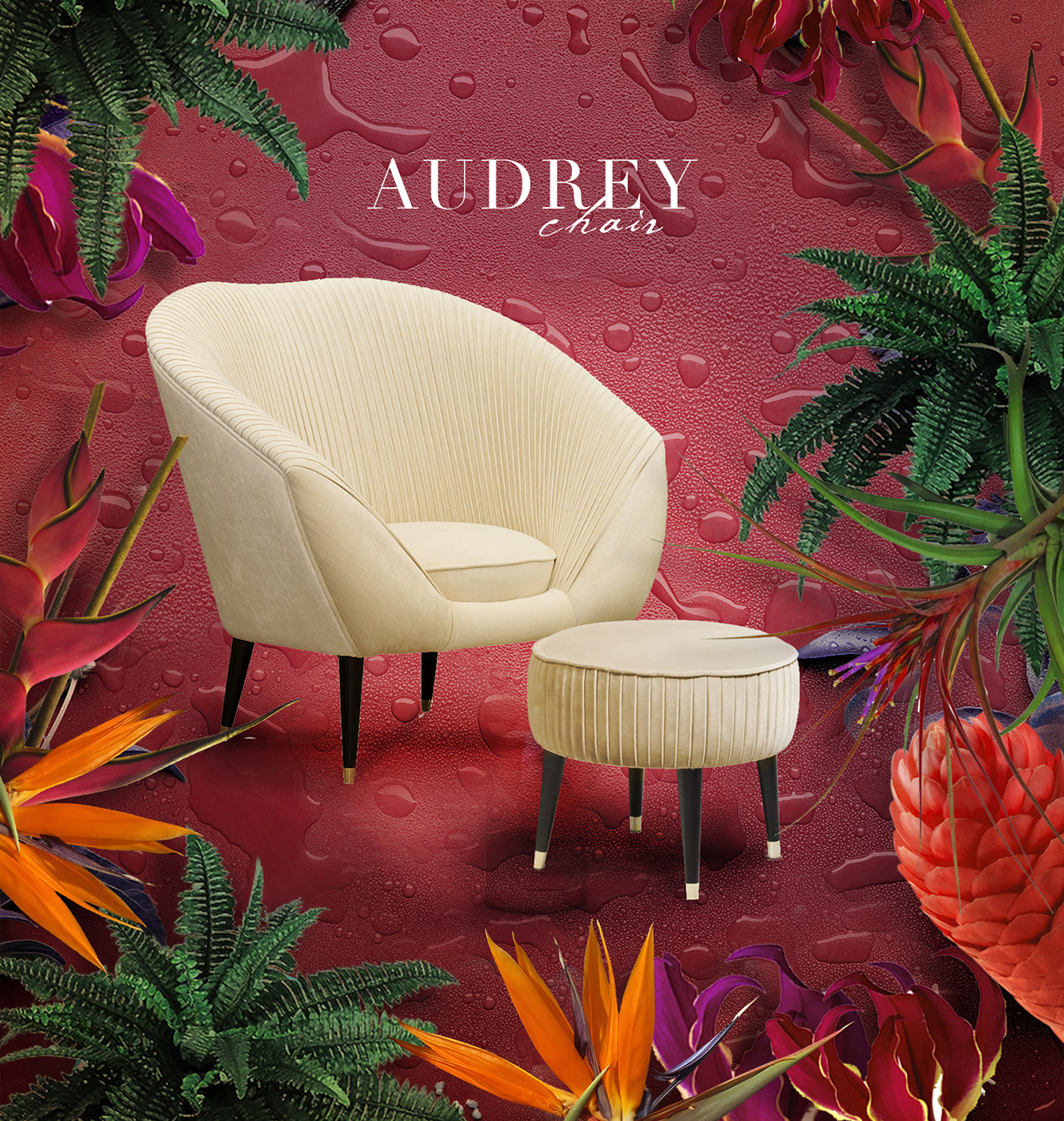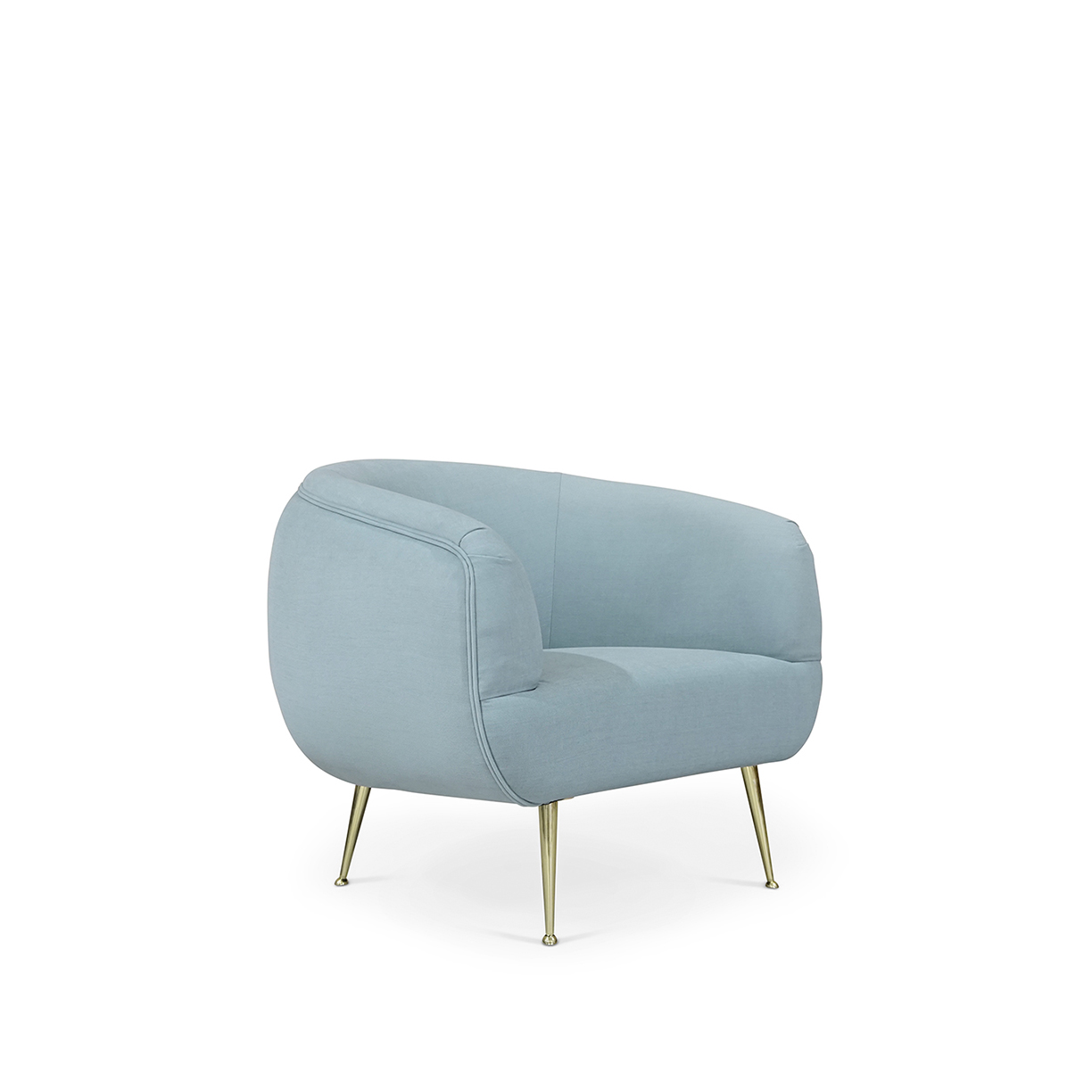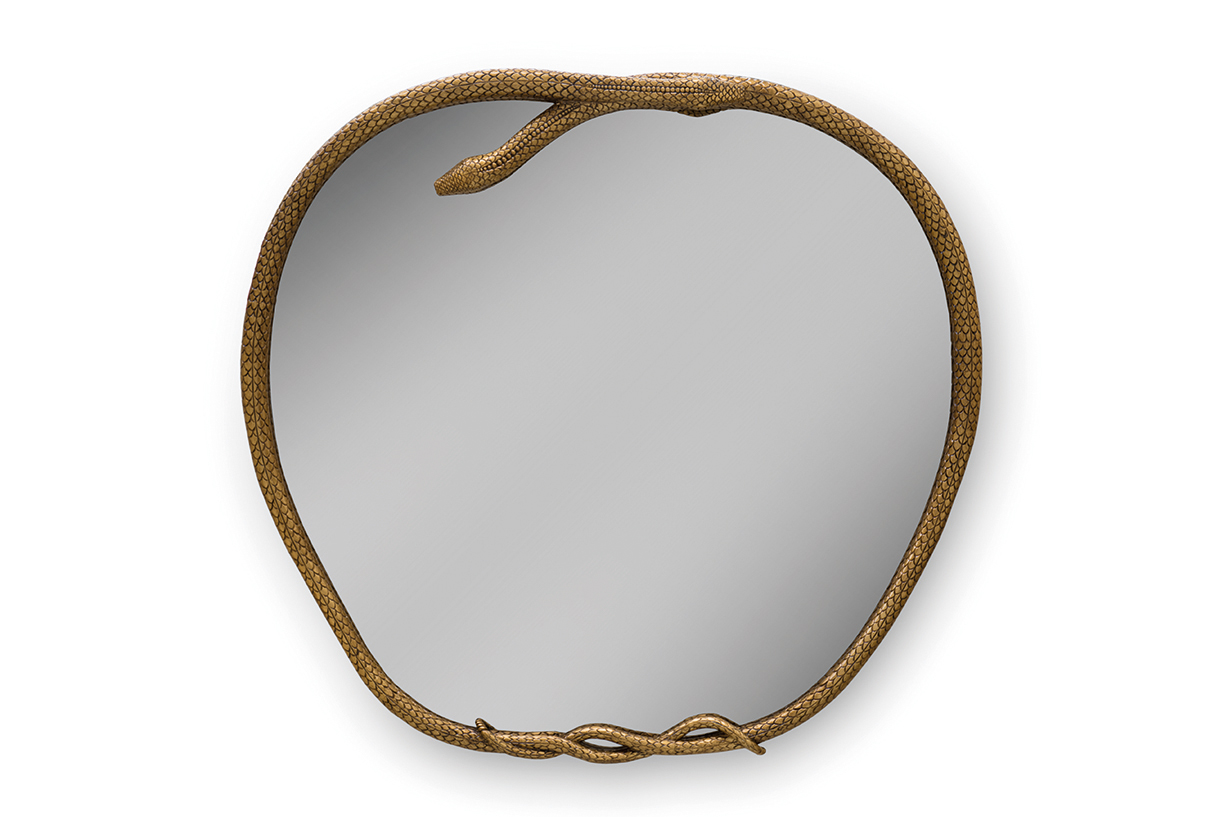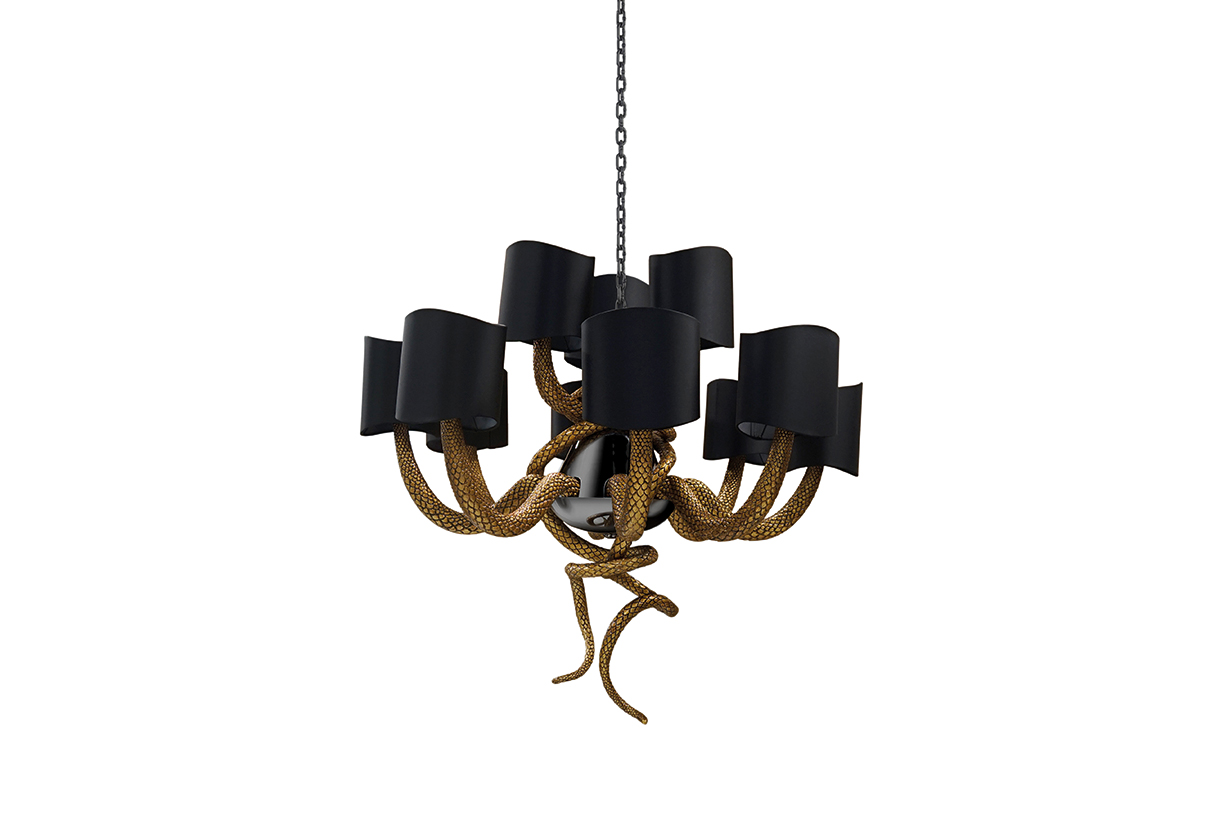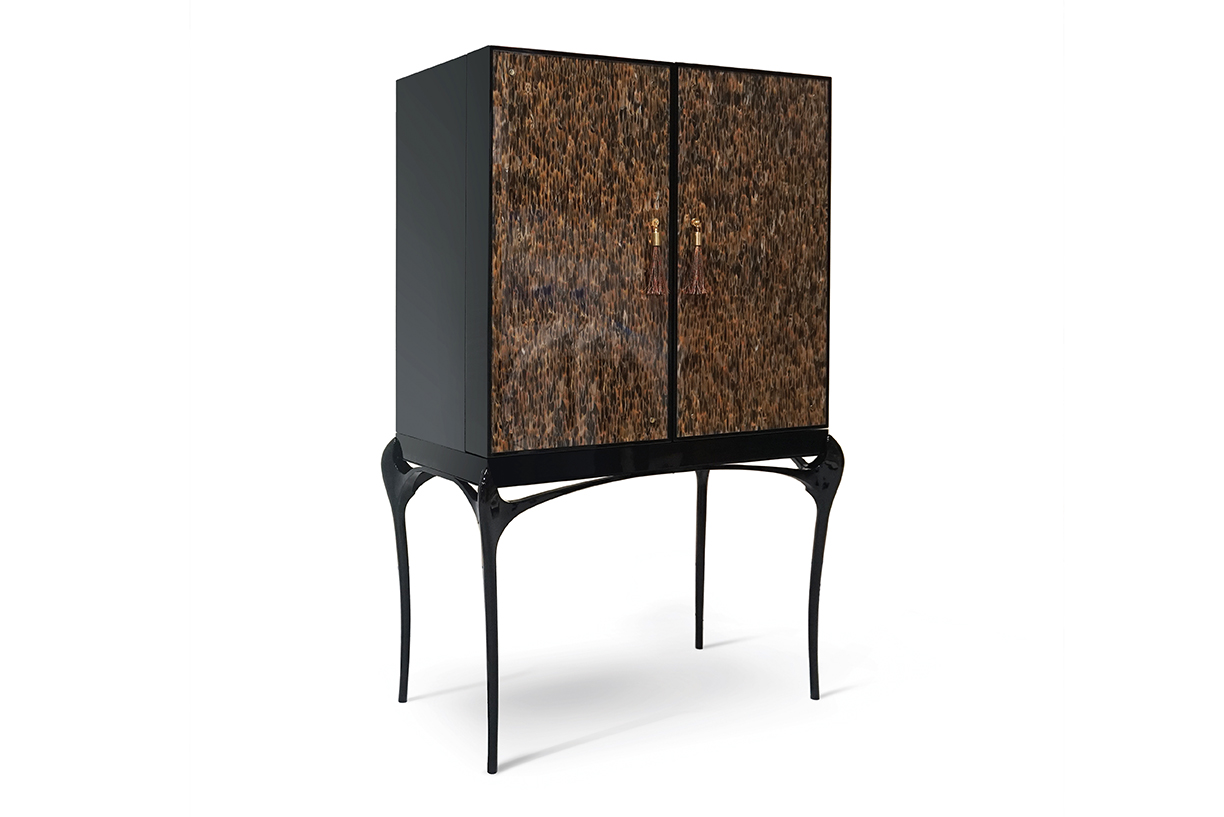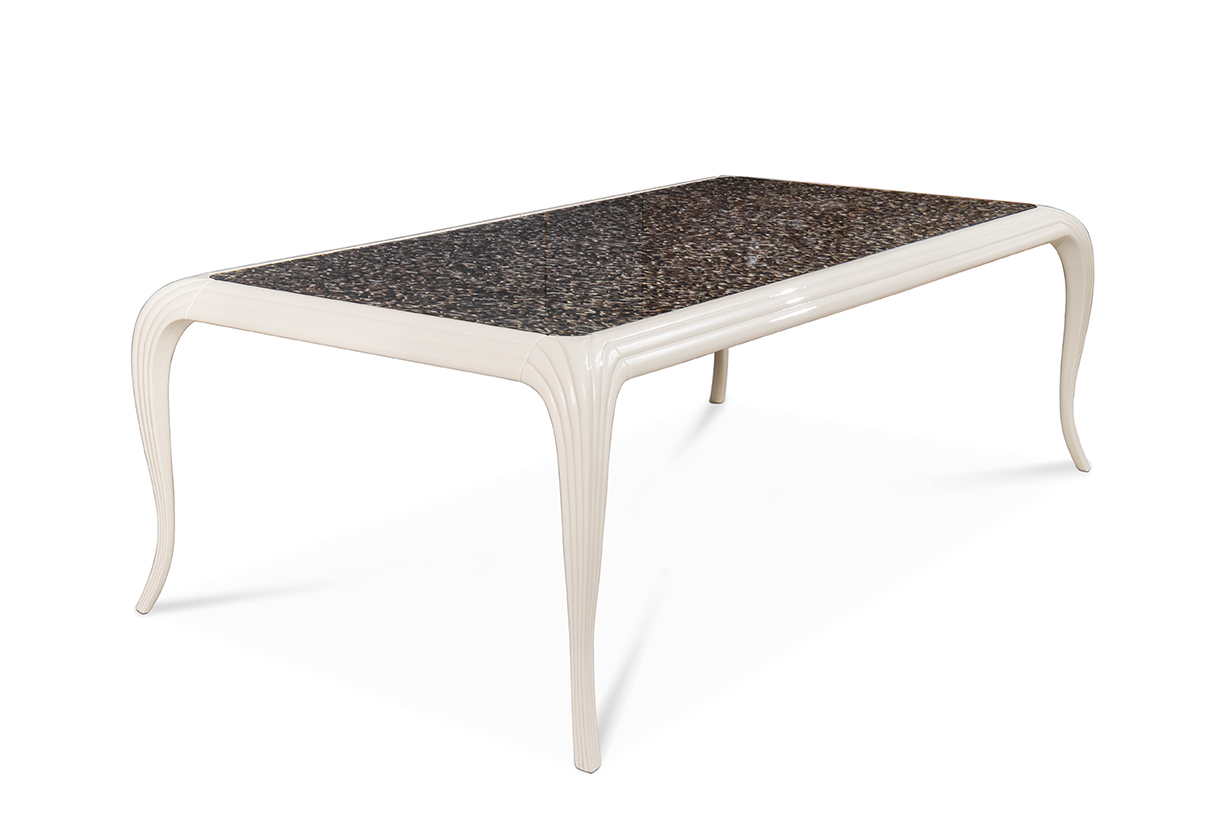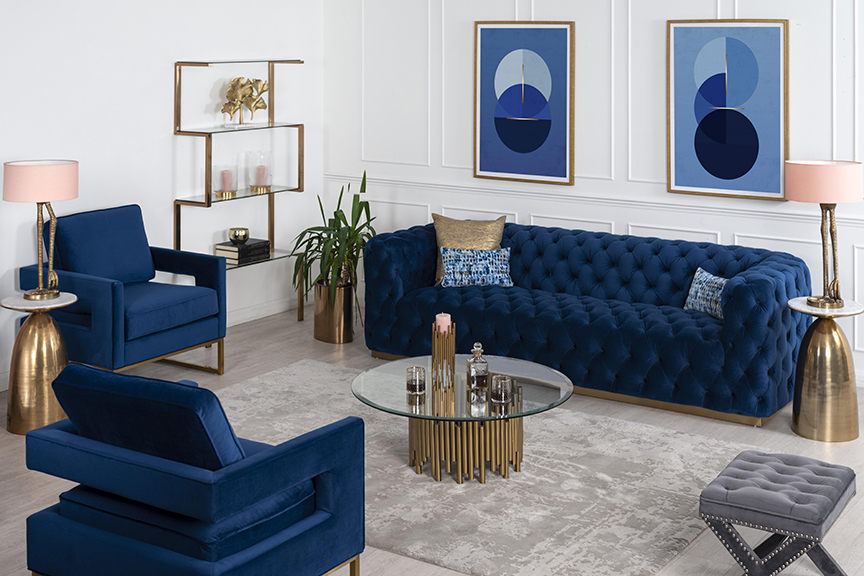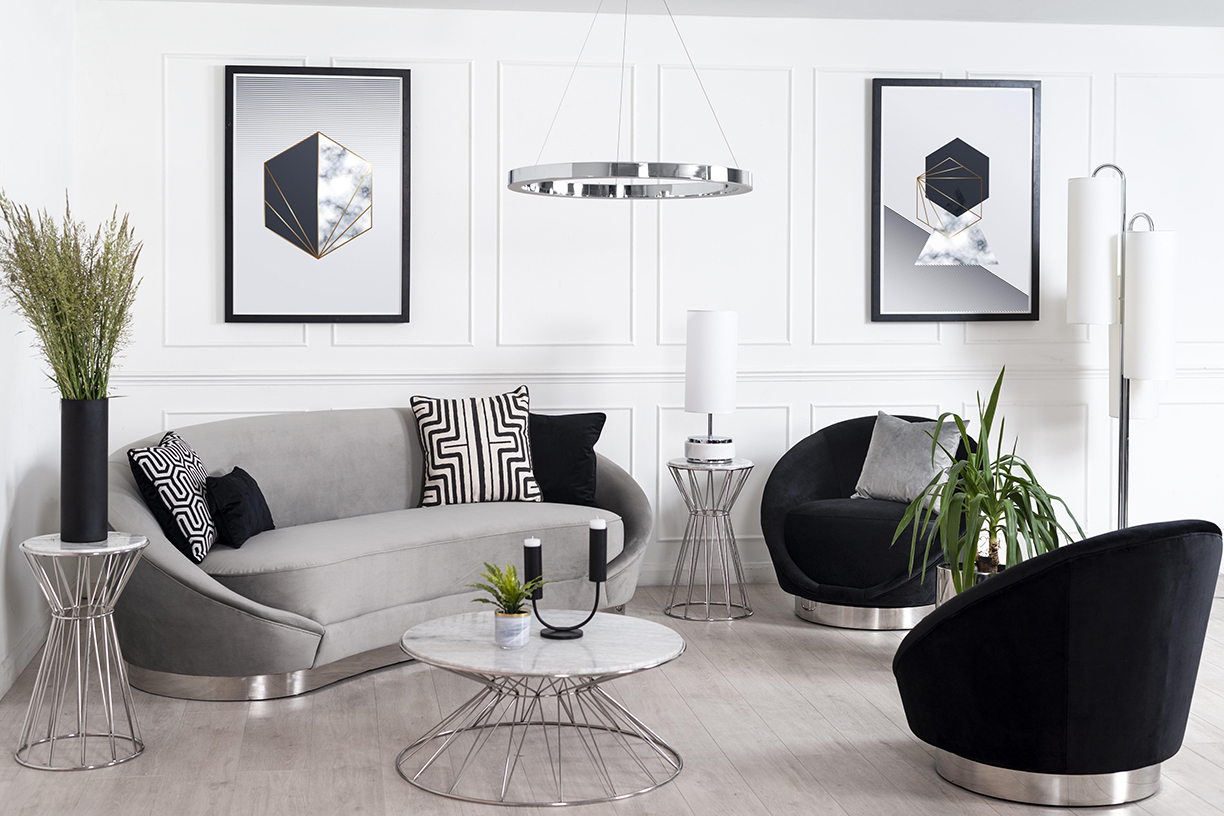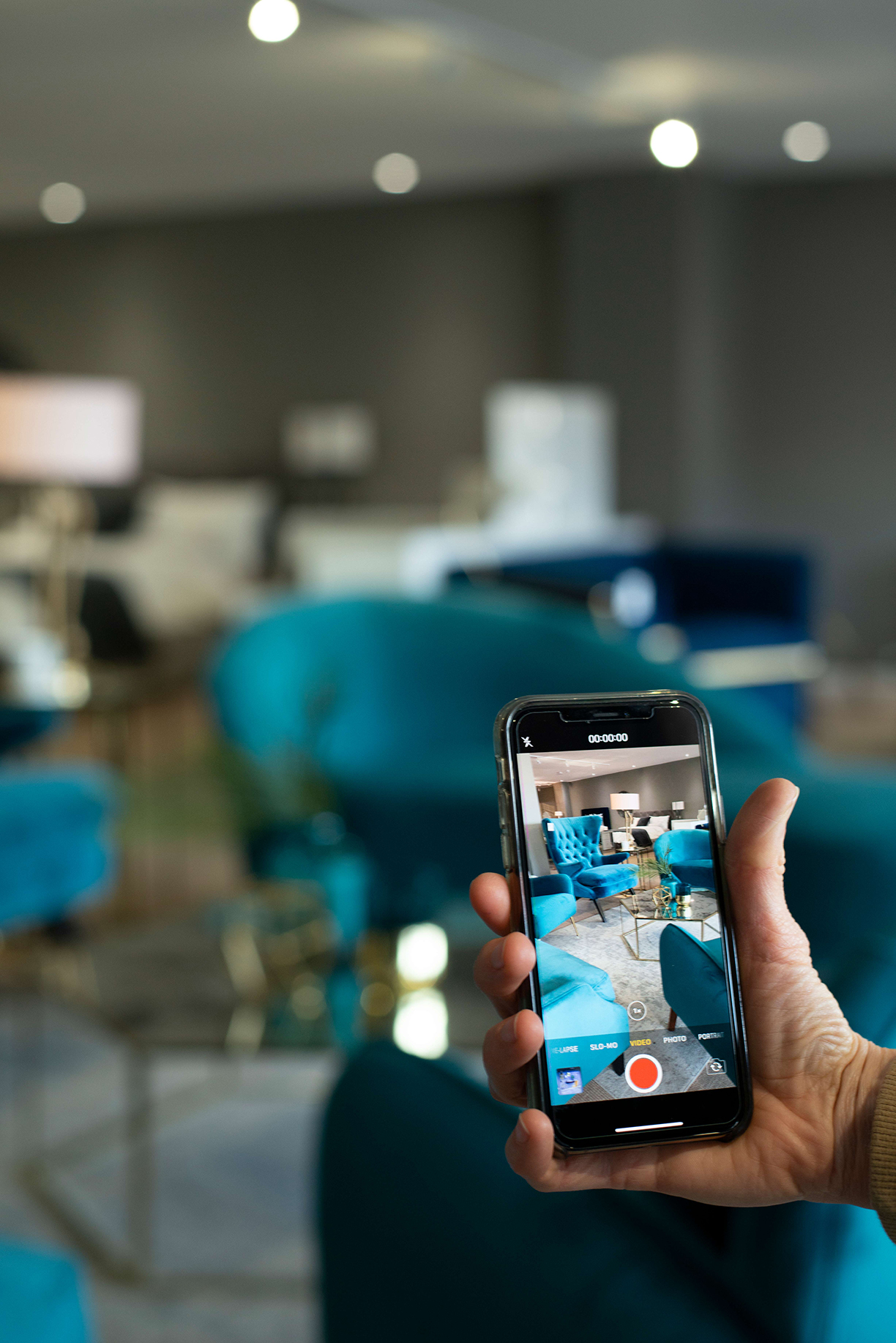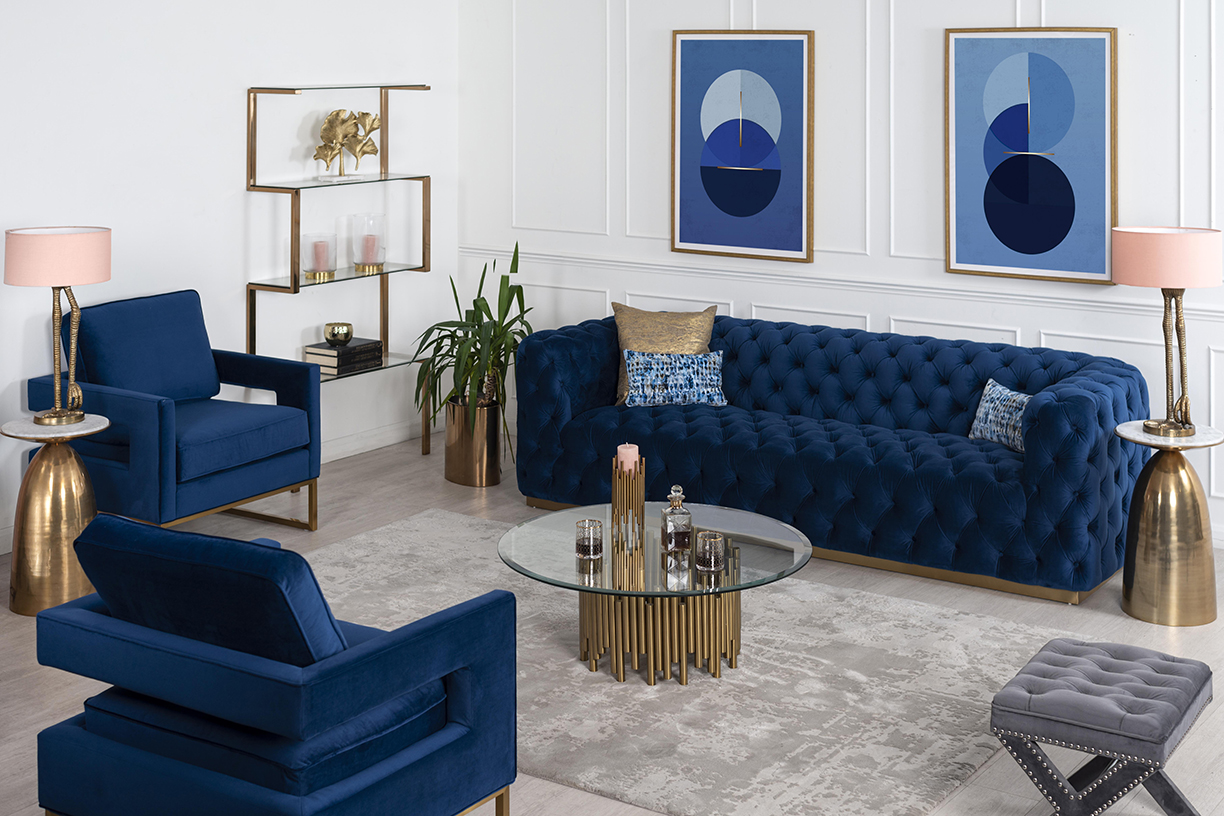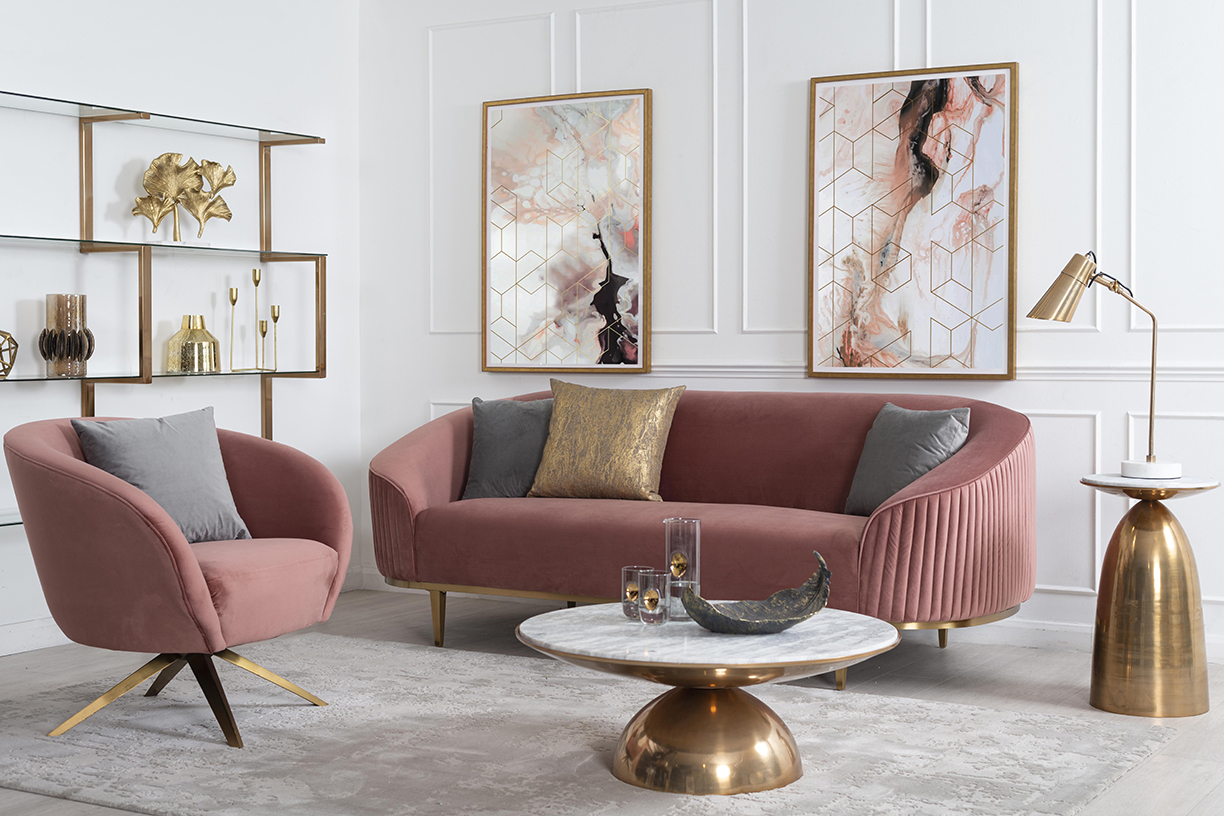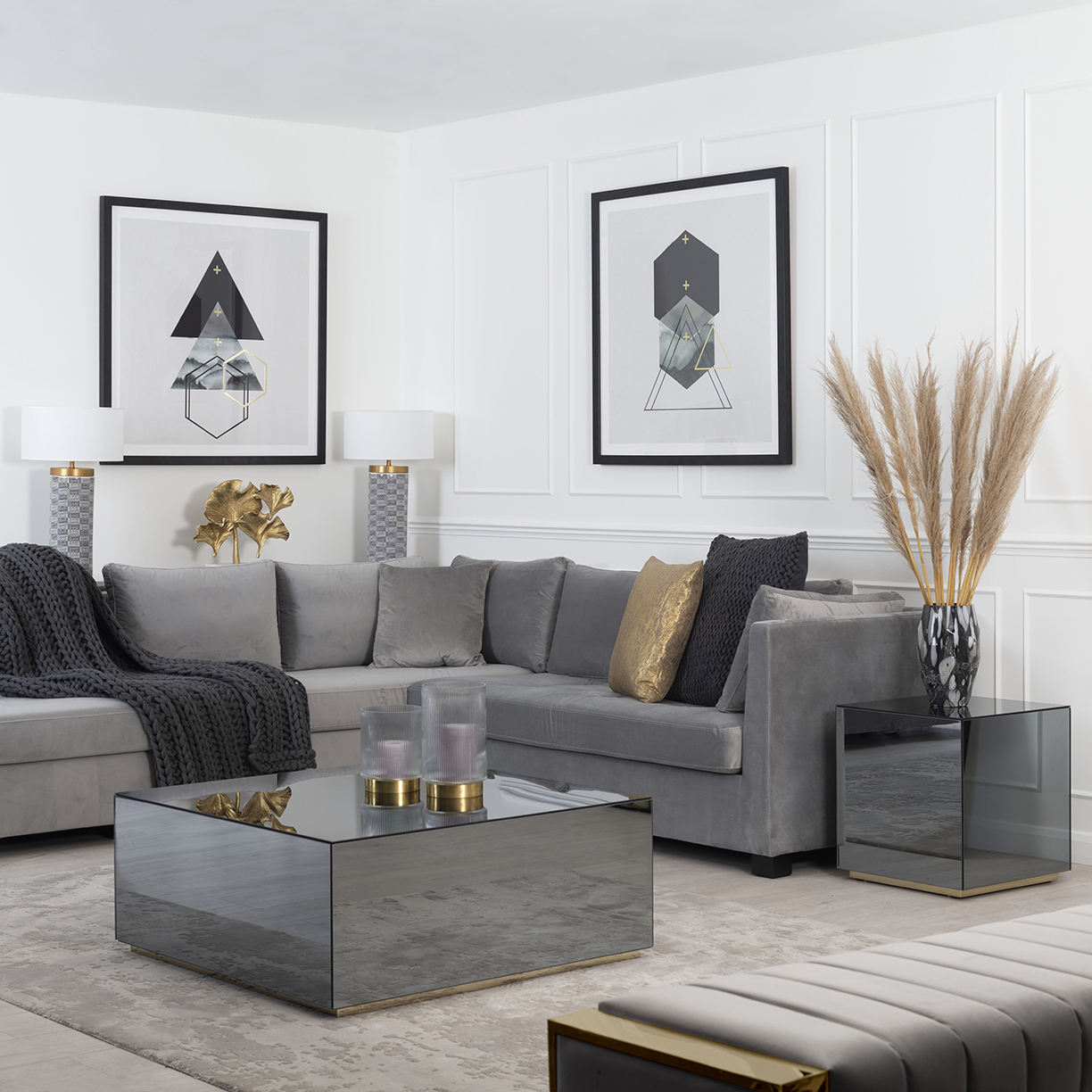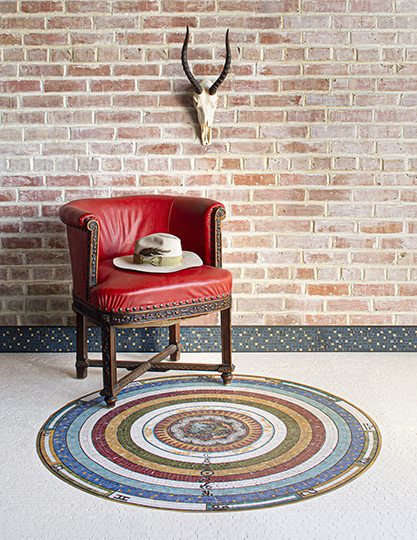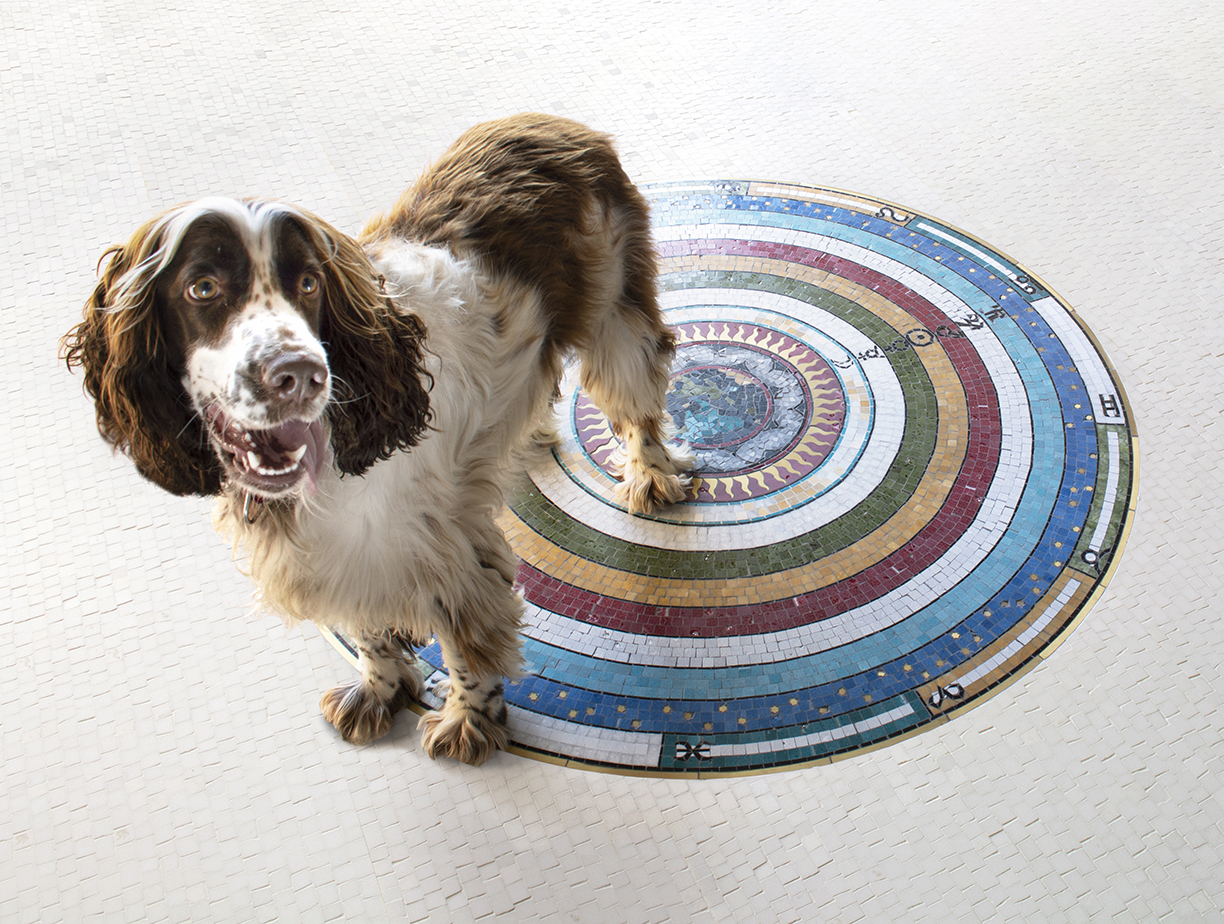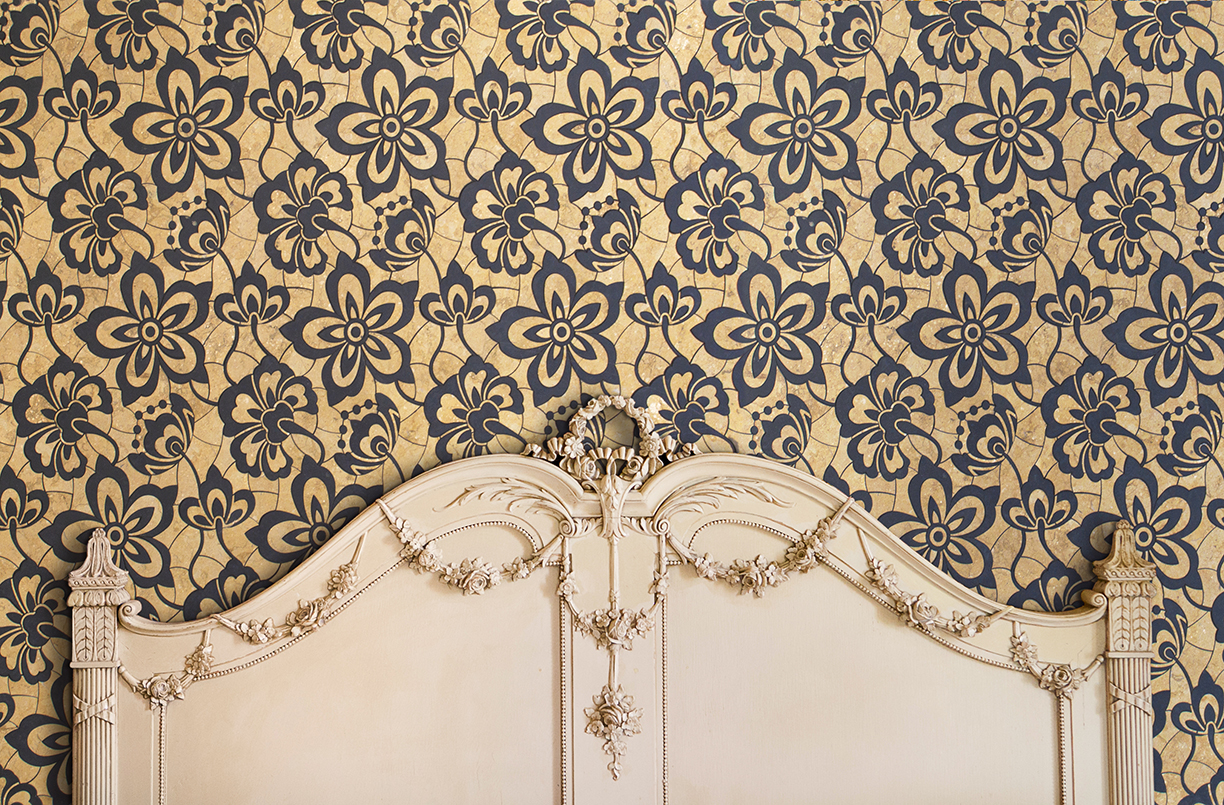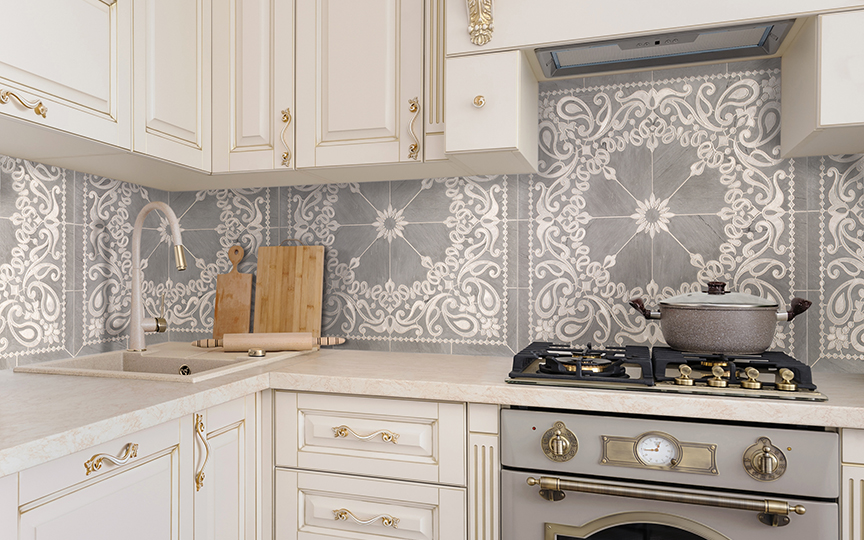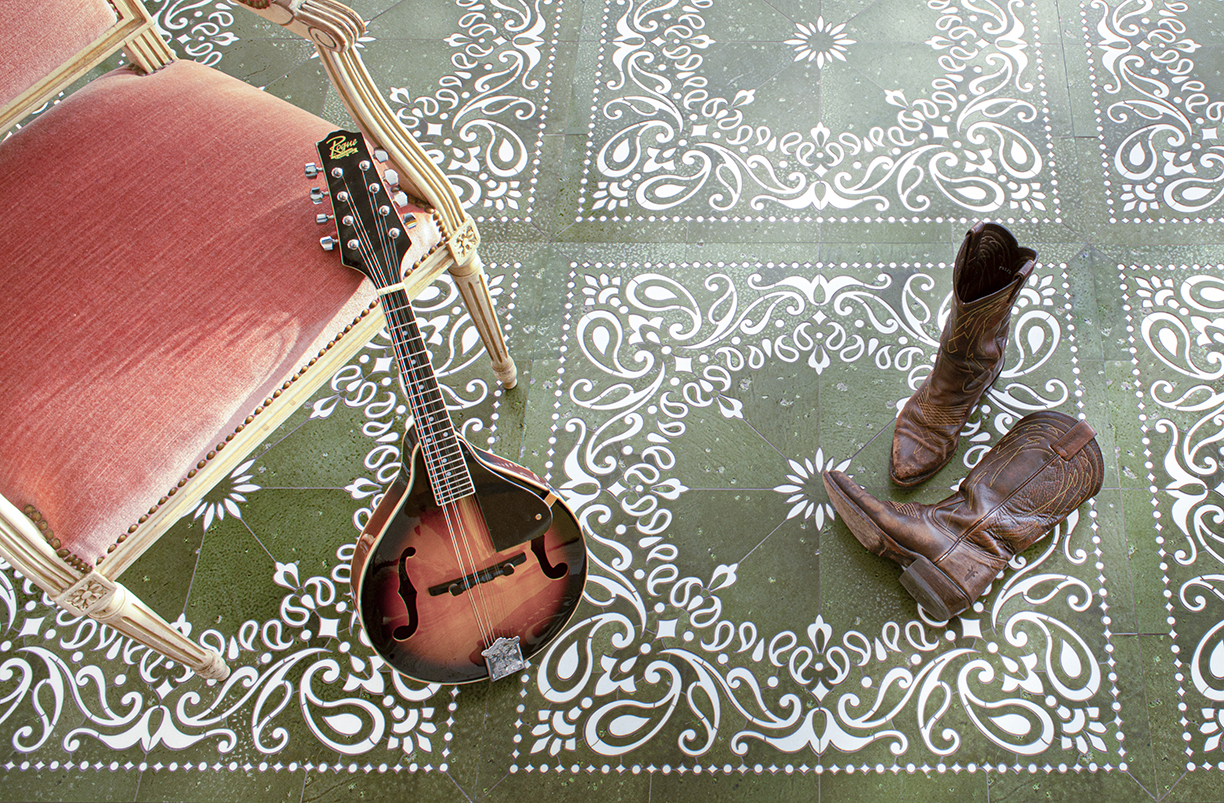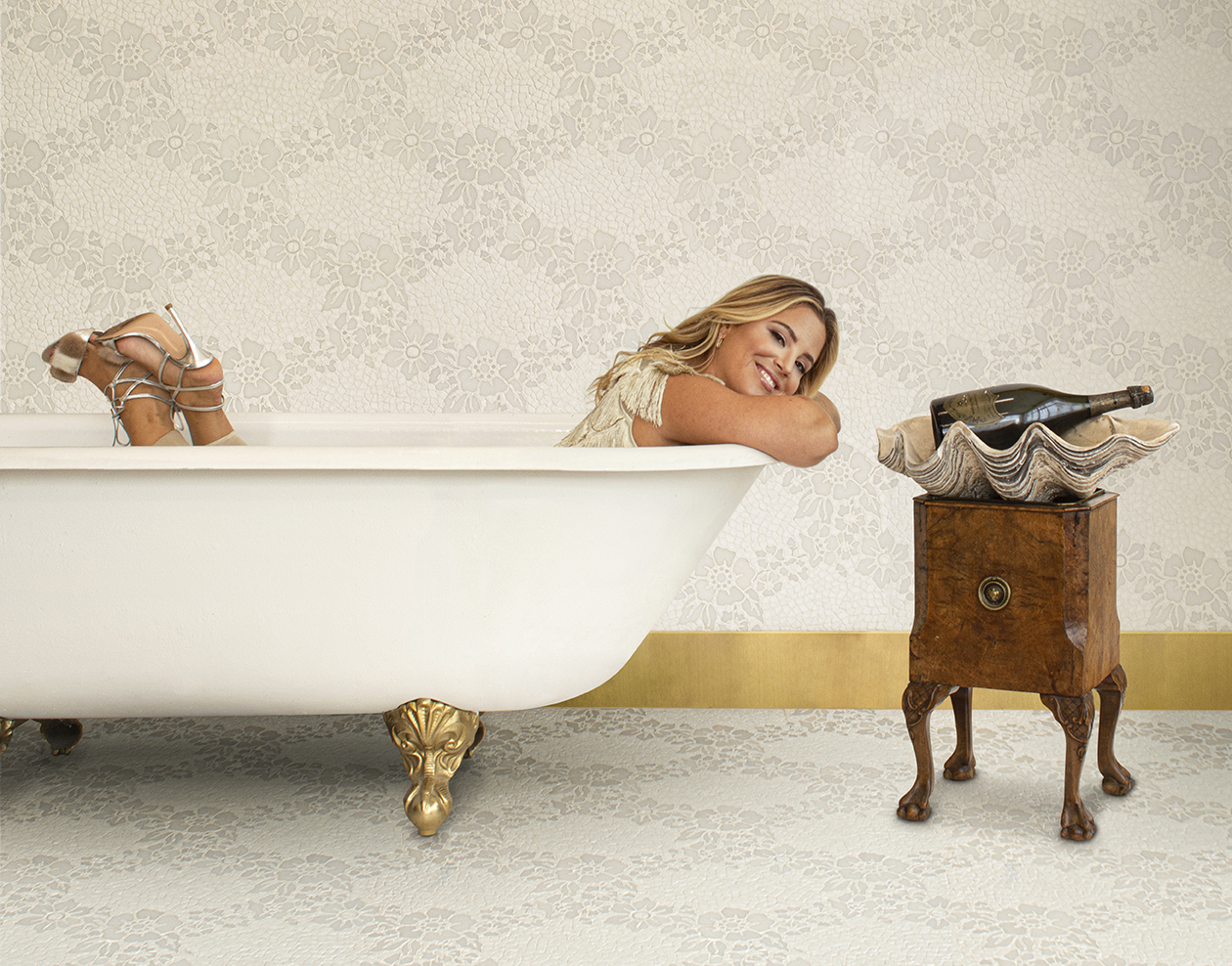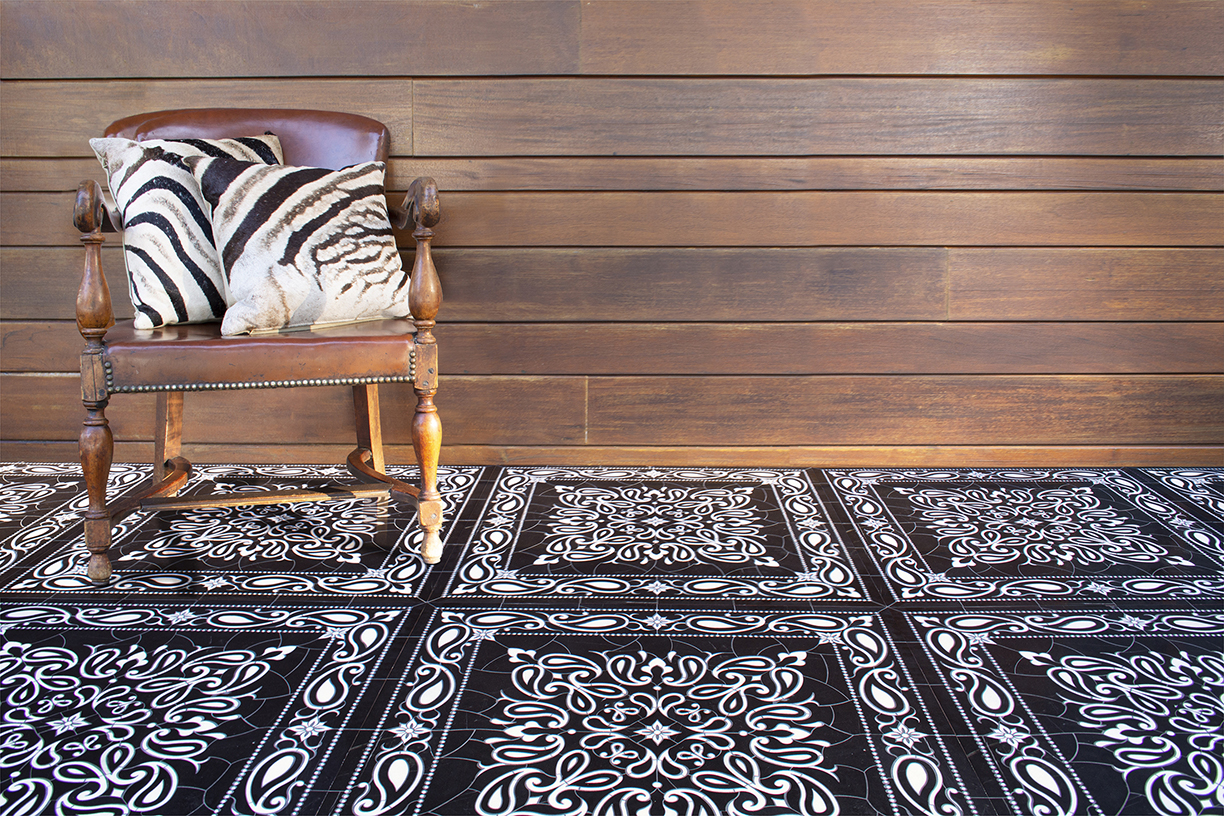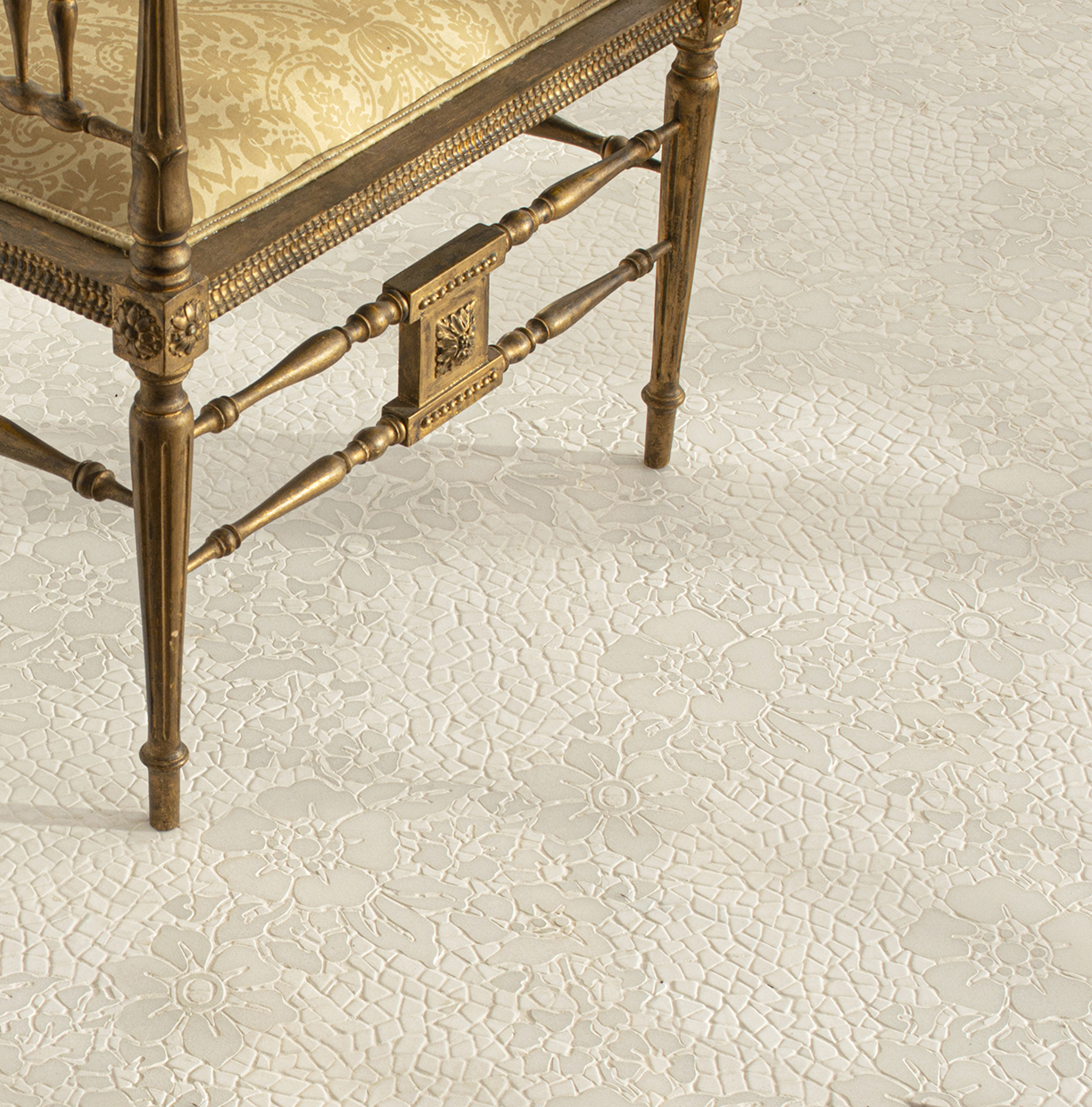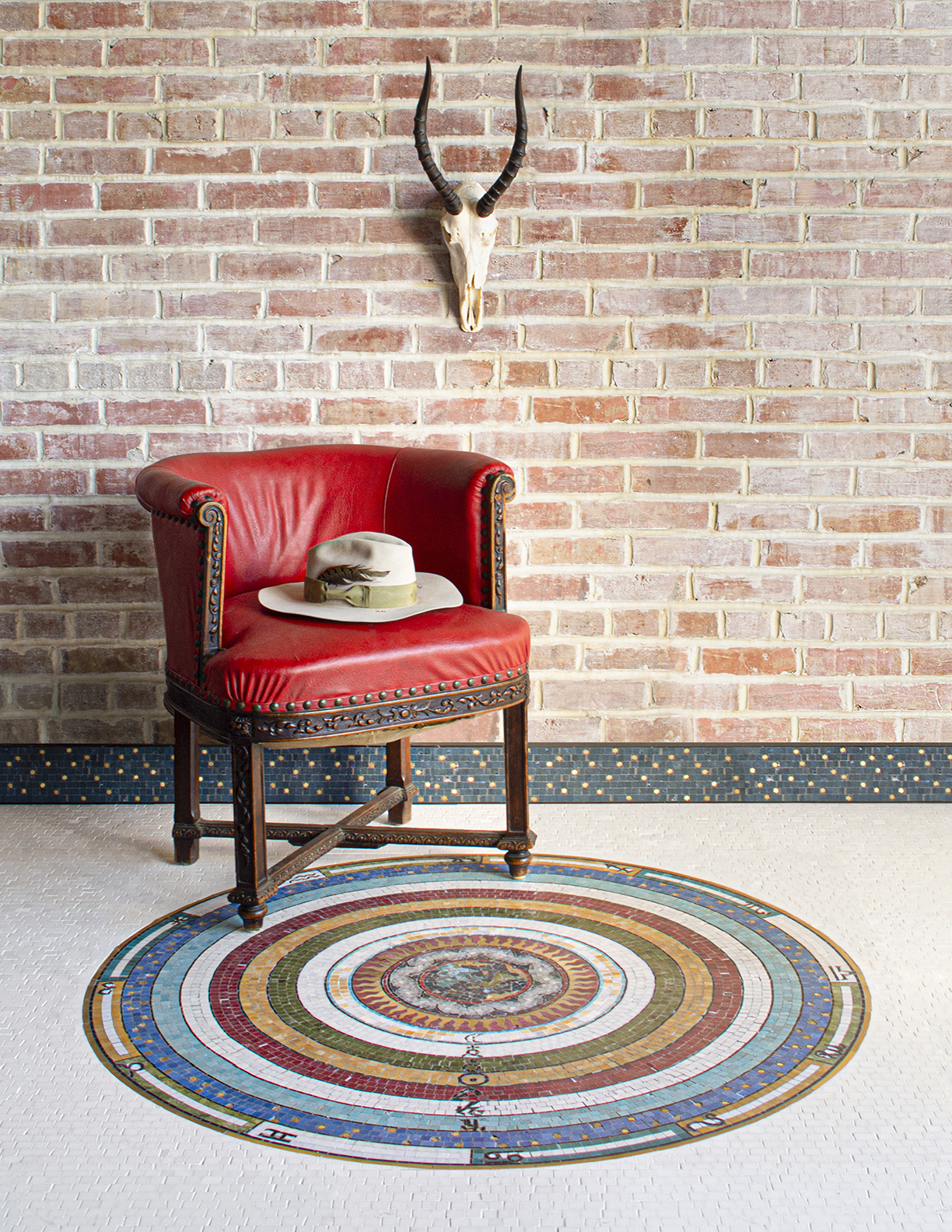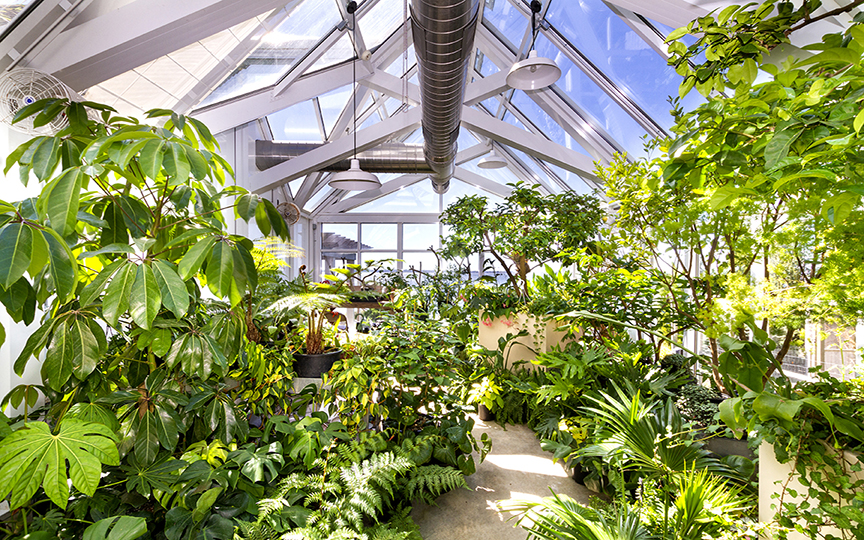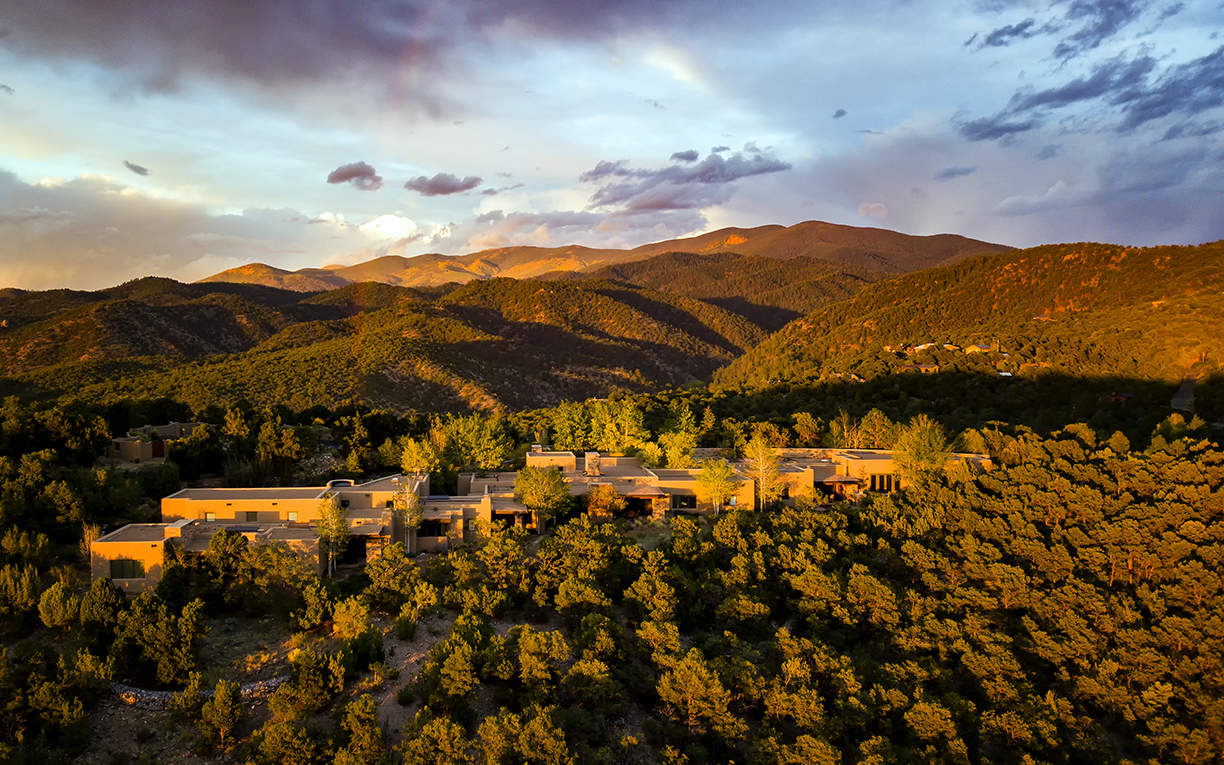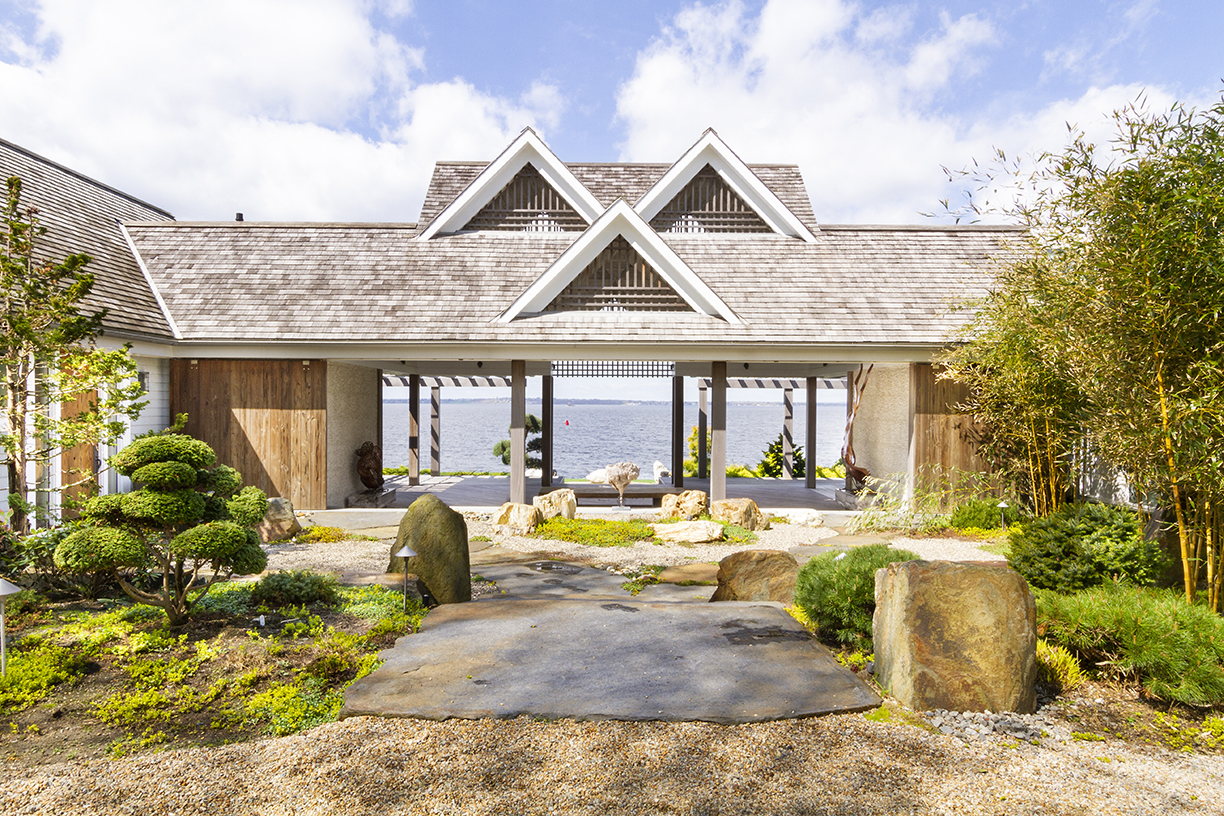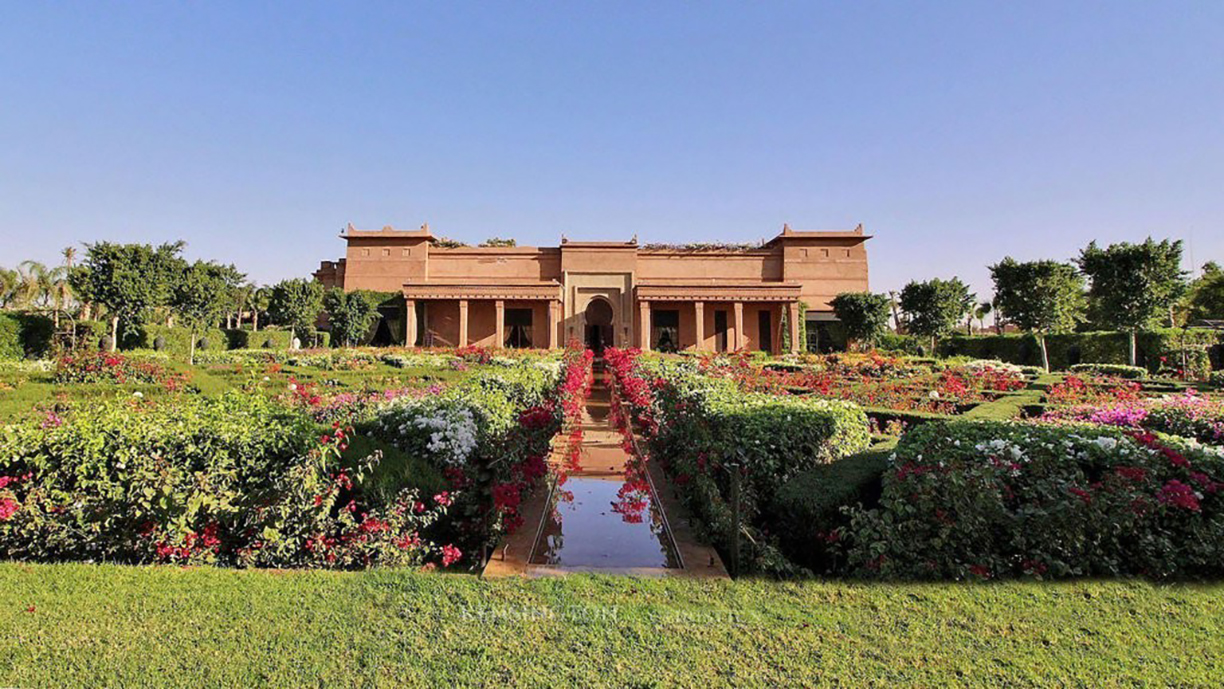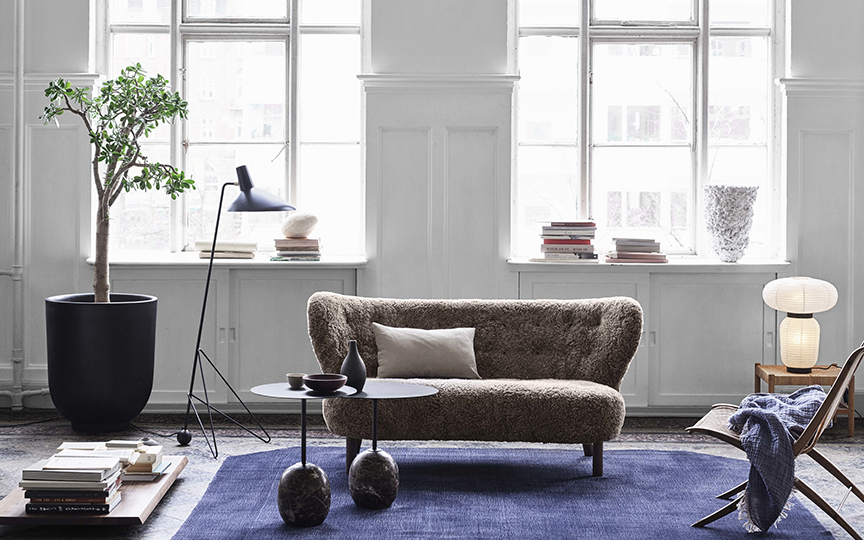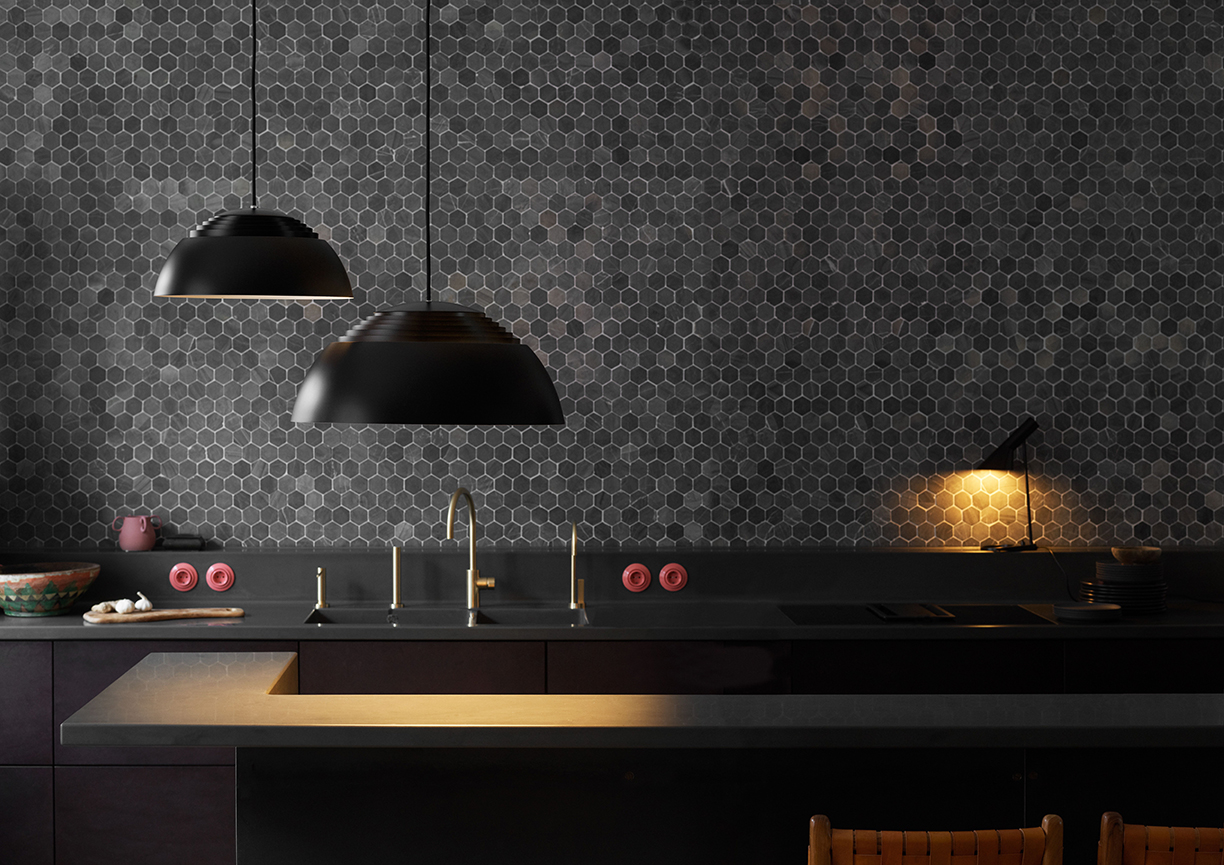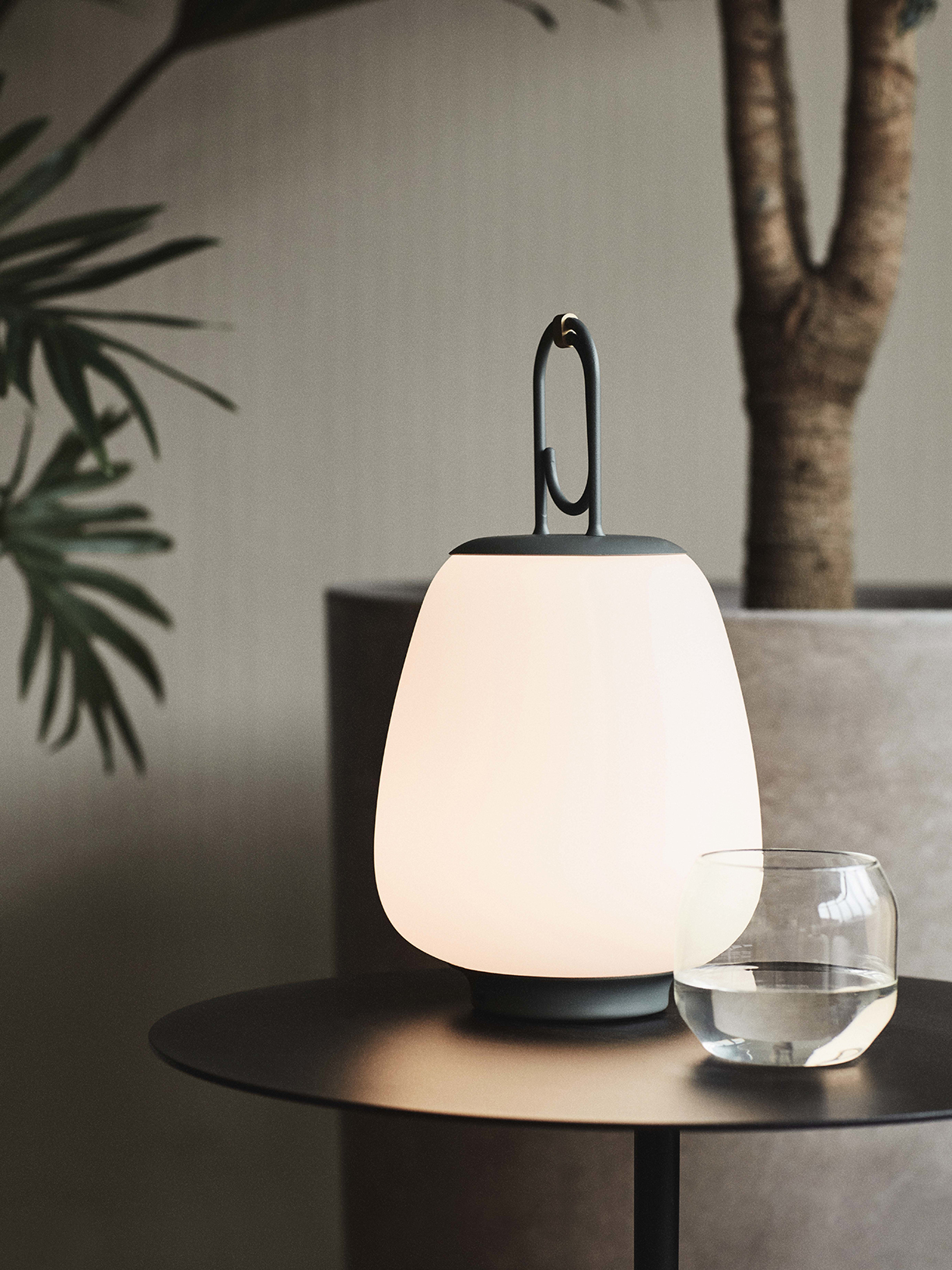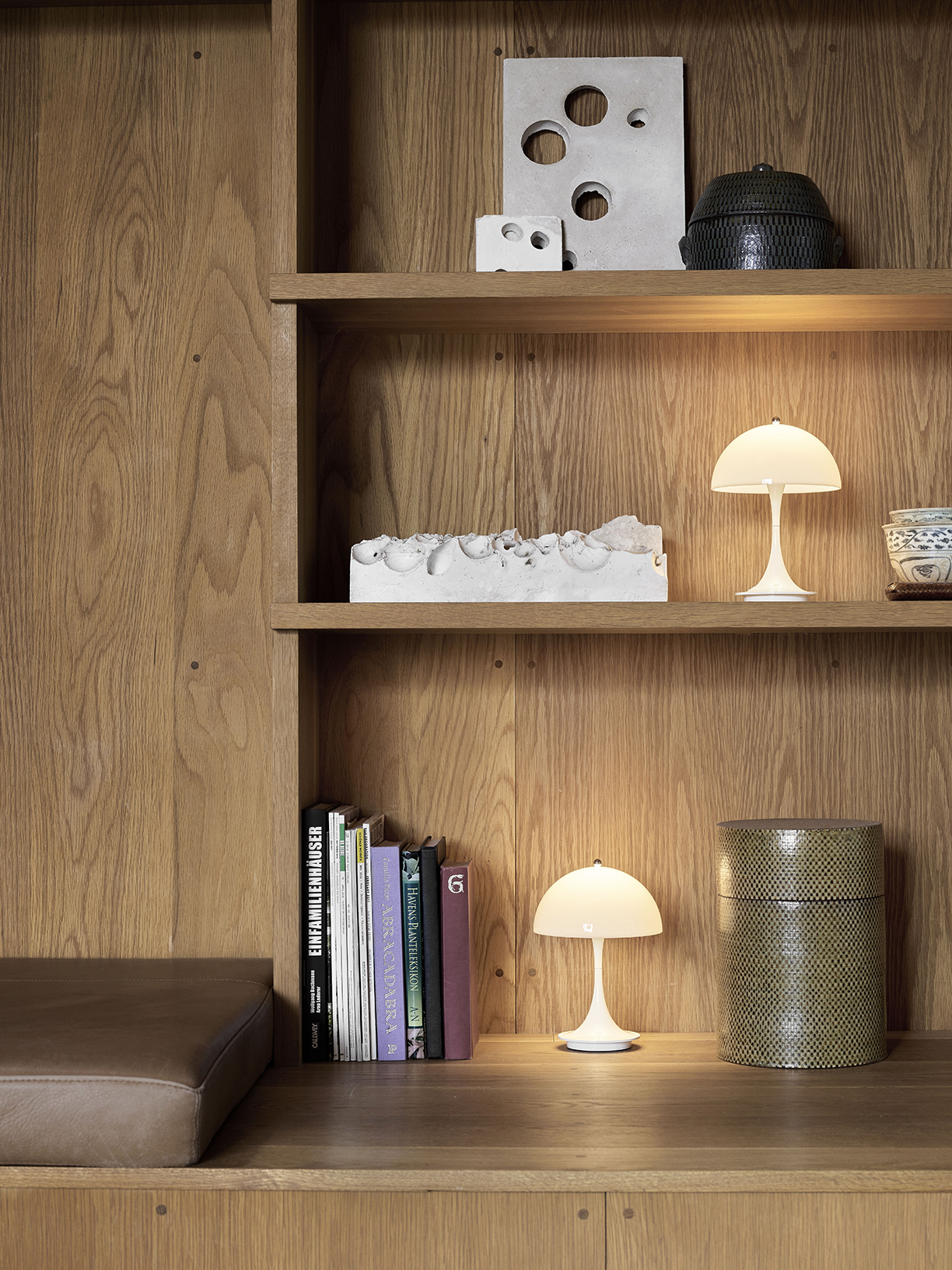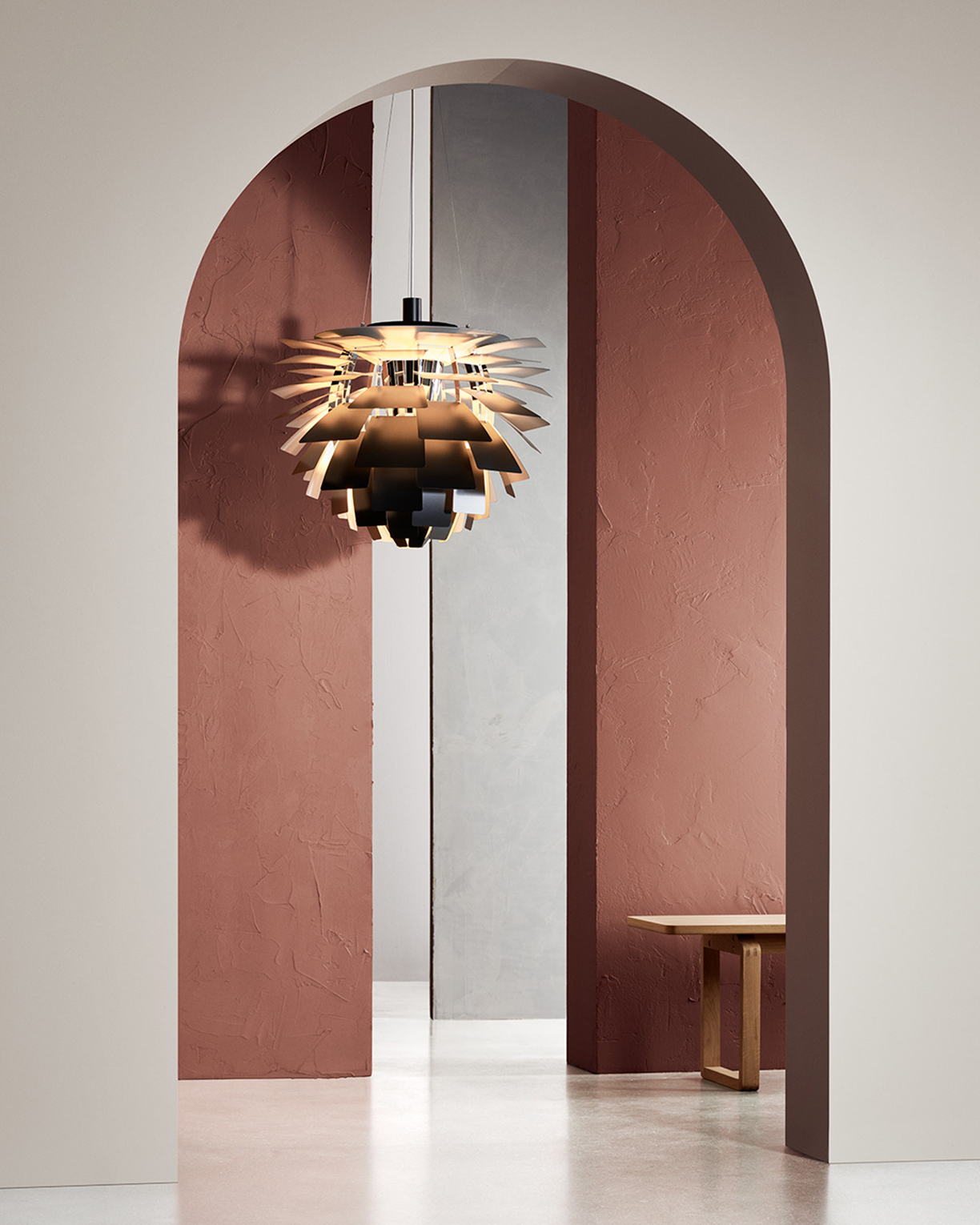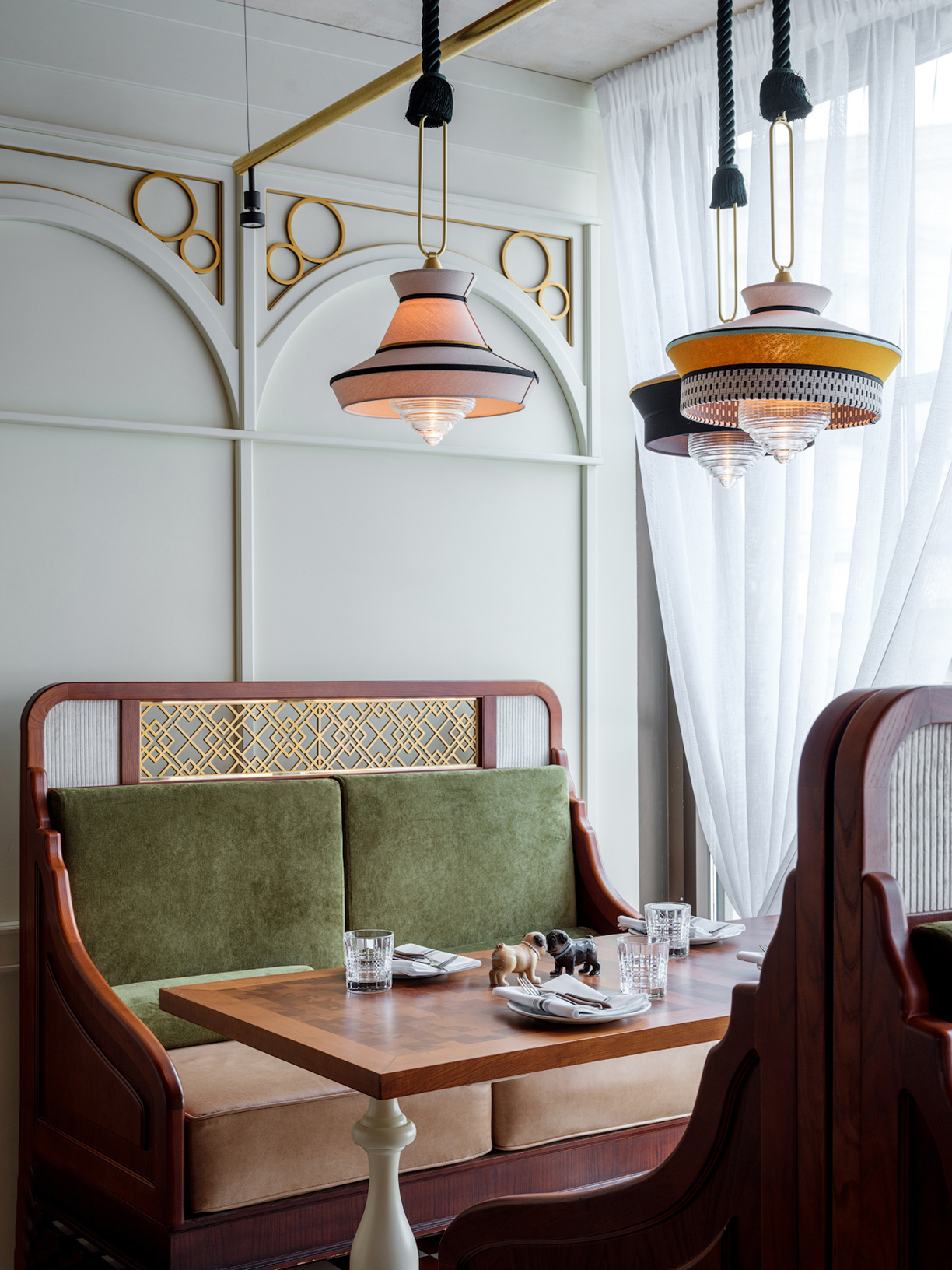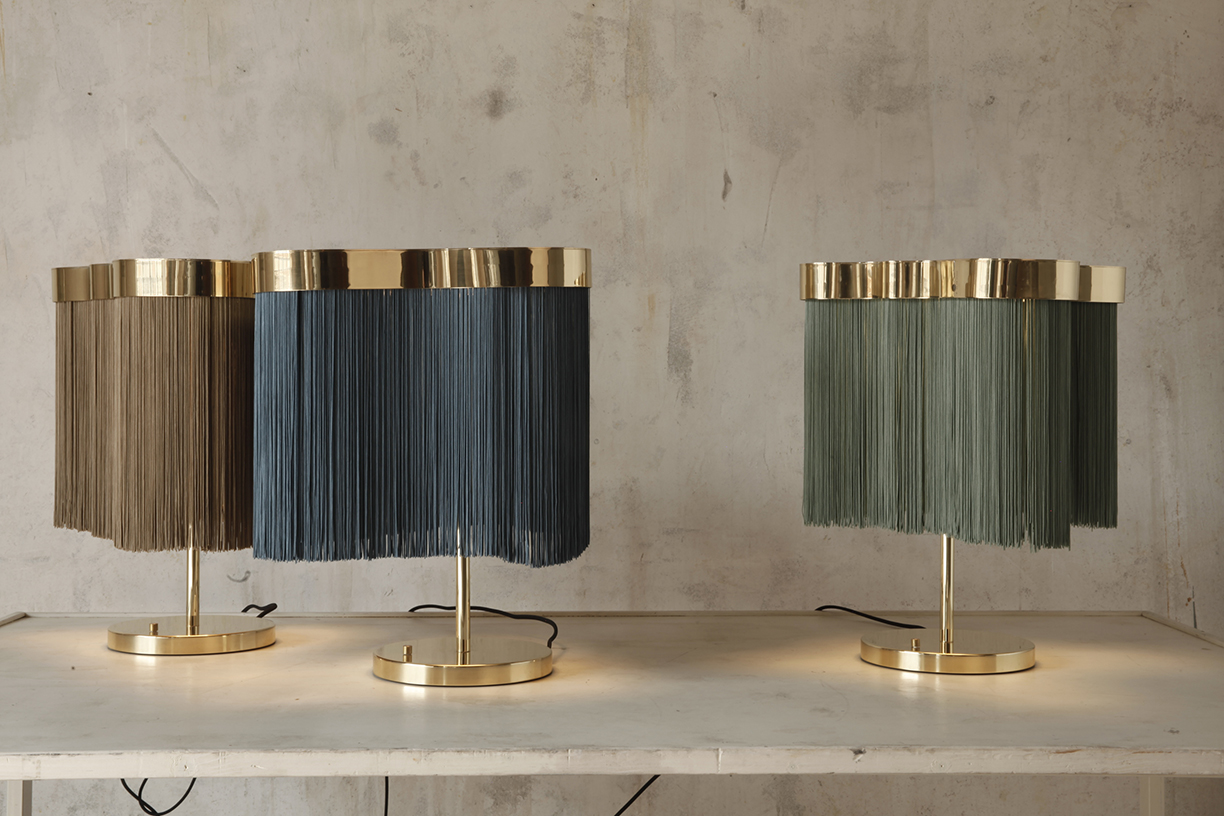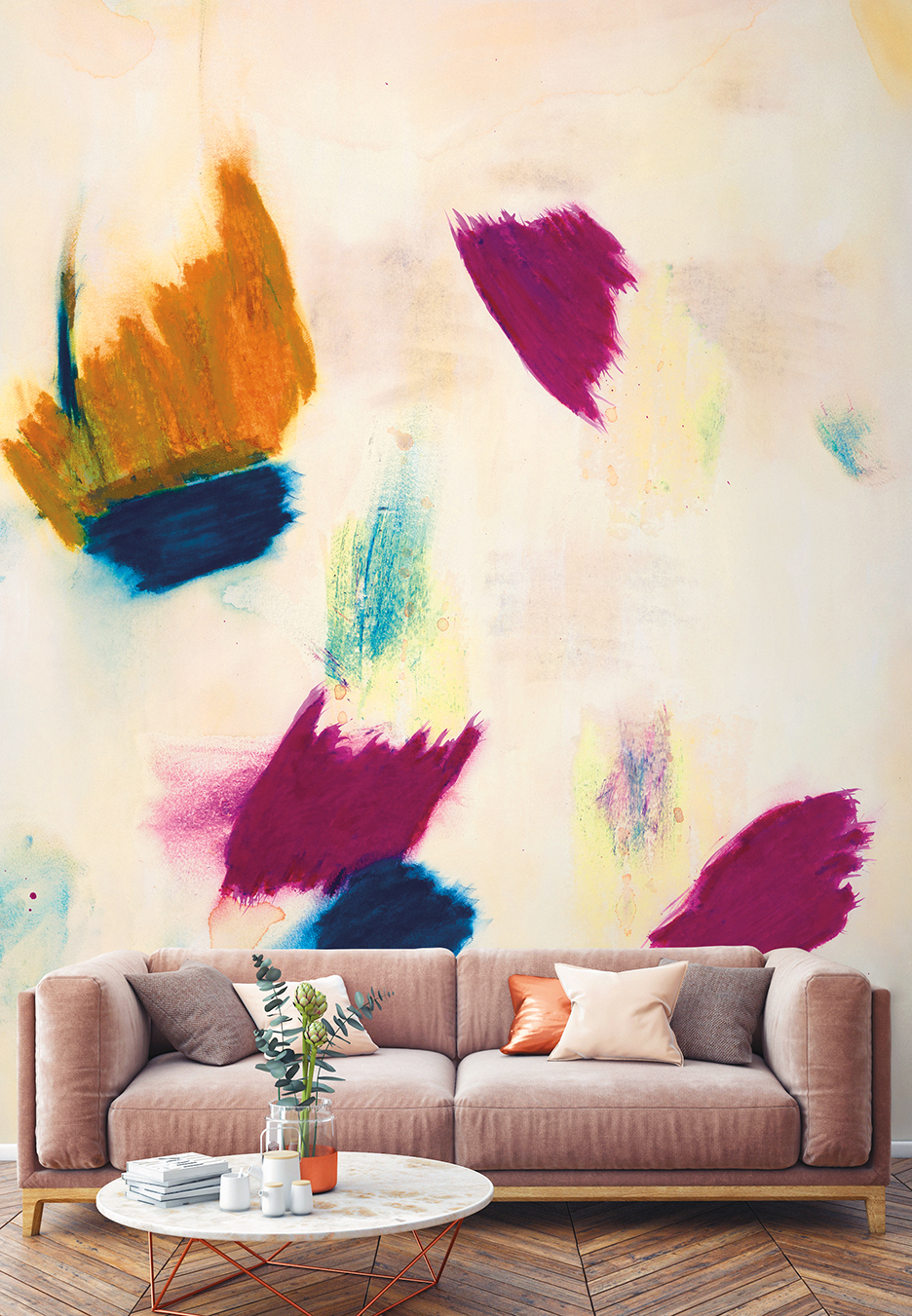
Arabella by Tempaper. Photo courtesy of Tempaper.
Penchants usually gravitate to the latest and greatest, but one tried and true material continues to be a magical catalyst for lifestyle.
Subtle or bold, classic or contemporary, shiny or opaque, wallpaper has evolved to be design’s magic wand — able to add pizzazz, lend a mellow undertone or inject just the right touch of coziness to any room.
Uniquely versatile, it enables consumers to fashion an interior that captures their individuality. It allows for unlimited customization as well as the creation of personalized living spaces, even adapting for children and pets without compromising on aesthetics. And for every budget from DIY to bespoke, there is a product.
“People want to LOVE their home. They want comfort and convenience, but do not want to sacrifice chic,” says San Francisco designer Jay Jeffers.
“There is a strong desire among consumers for original, authentic design that goes along with their vision for their house,” explains Joyce Romanoff, CEO of Maya Romanoff, a manufacturer of luxury wall coverings.
Ask designers about wallpaper and they invariably chorus, “it’s not your grandmother’s wallpaper,” a truism heard so frequently that it’s almost become a cliché. What is truly amazing is how much wallpaper ends up in homes today, adding a visual depth impossible to achieve with paint. Murals are back. So are individual walls showcased with a stunning texture or print.
And walls are only the beginning of today’s wallpaper story. “Trends indicate that the consumer is looking to personalize space through the creative use of wallpapers beyond the walls. Backings for bookcases, shelves, customized furnishings and ceilings all enter the realms of possibility.
While full room wraps, murals and feature walls still dominate the world of captivating designer installations, these small impact pieces allow for strong style statements without huge pattern or space commitments,” explains Carol Miller, content marketing manager for York Wallcoverings, a manufacturer with 125 years of innovation.
If the mention of wallpaper conjures visions of the flat, one-dimensional rolls common little more than 10 years ago, it’s time to refresh that image. “For many years wallpaper was something many of our clients avoided, but today, it is being rediscovered as an exciting way to introduce the color and patterns many homeowners are now embracing. And there are more wallpaper options out there than ever, thanks to advances in technology,” shares Elissa Morgante, founding partner of Chicago architecture and design firm Morgante-Wilson.
Dating back to decorated rice paper in China as early as 200 B.C., wallpaper has a long history that continues to evolve, with each century, each decade, adding innovations in materials, finishes, production methods and artistry. The most recent reinvention of wallpaper began more than a decade ago, but changes over the last few years have been especially remarkable. Old-school techniques such as block printing and silk screening continue, but the end result seems entirely new. Modern machinery creates precise designs, and new dyes impart richer vibrant hues. Diverse materials from wood and sand to crystals, shells, fibers, beads, even glass add depth.
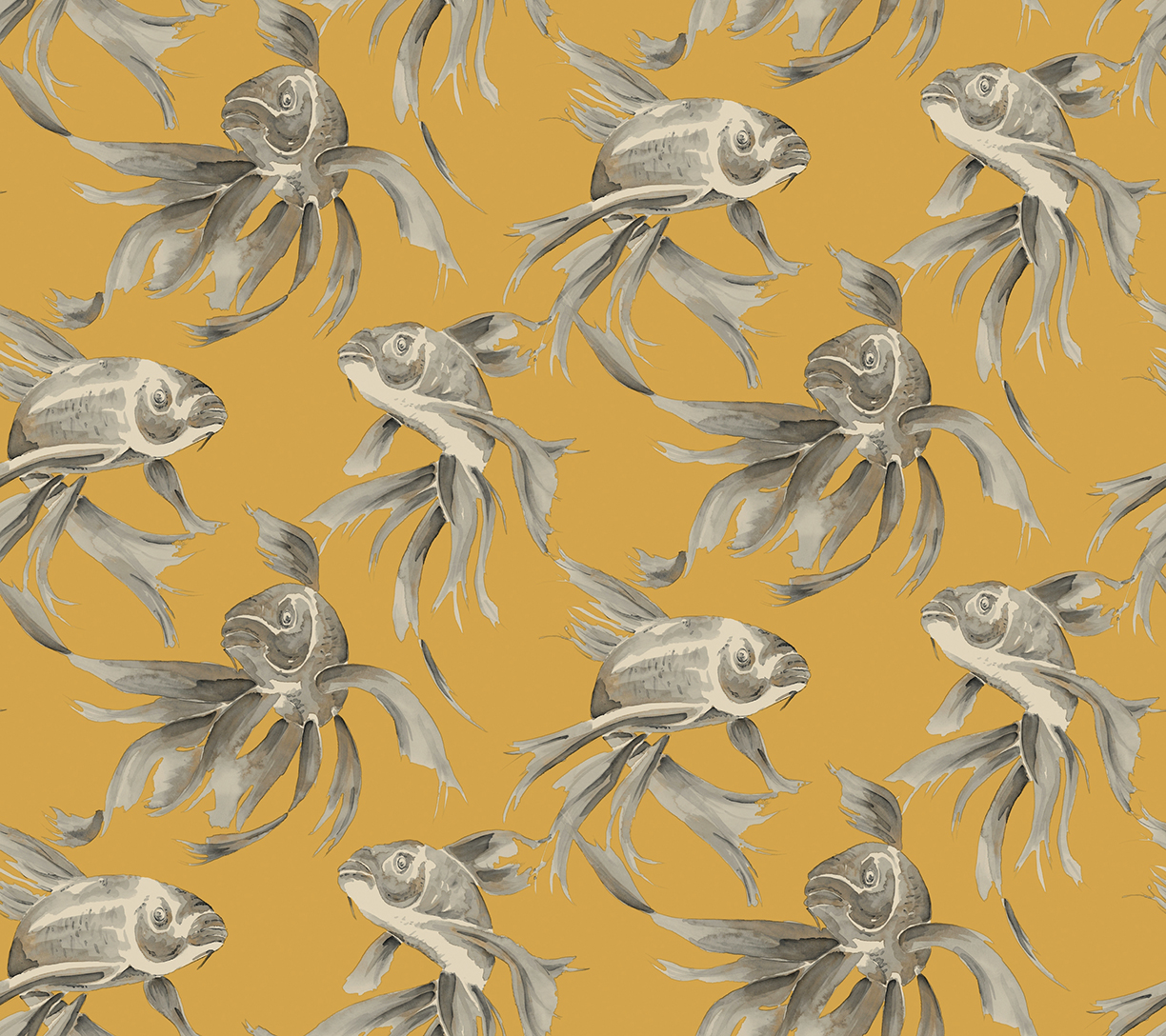
Left: Jewel Tones; Middle: Metallic; Right: Soft Organic
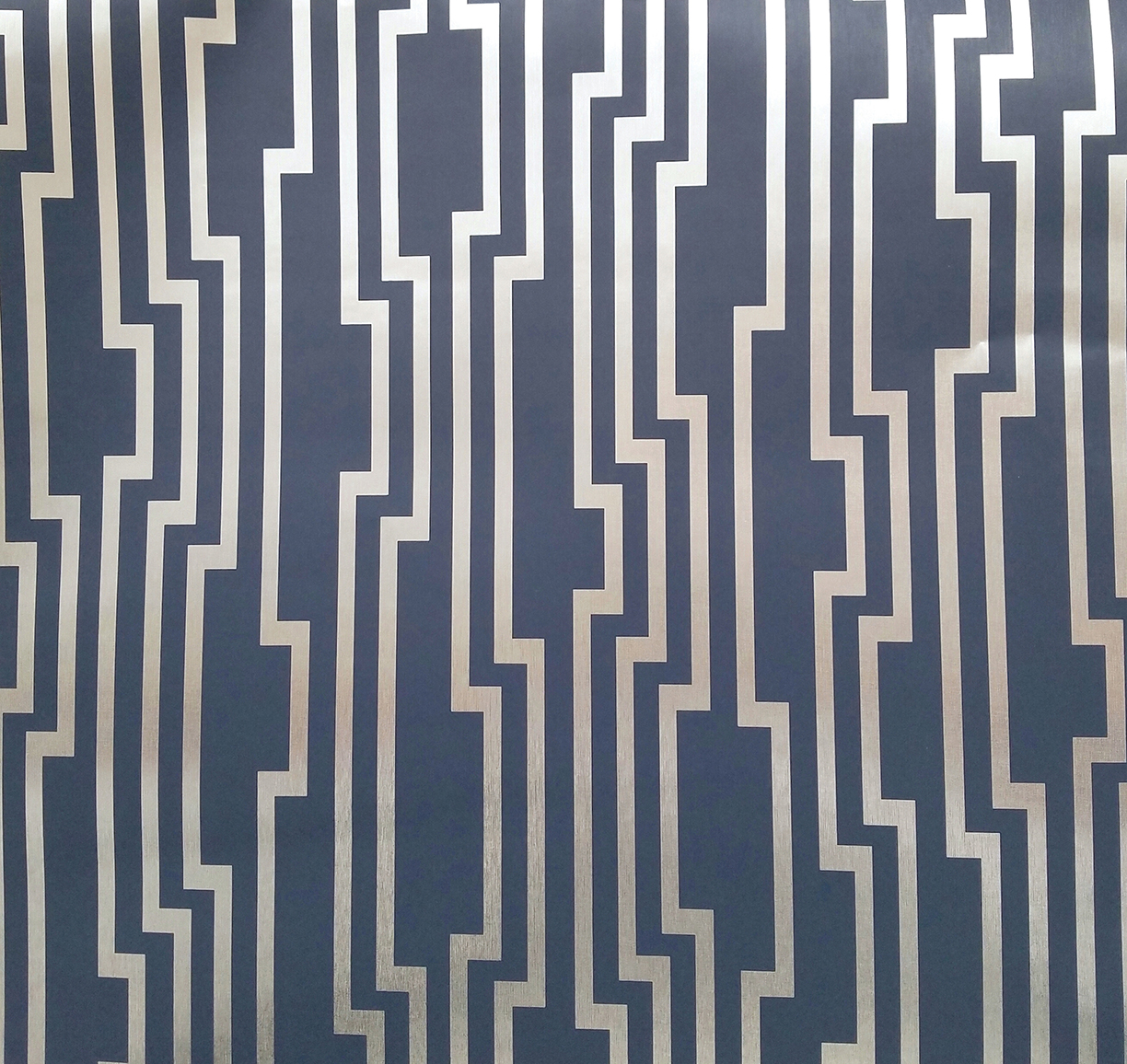
Wallpaper sample photos courtesy York Wallcoverings.
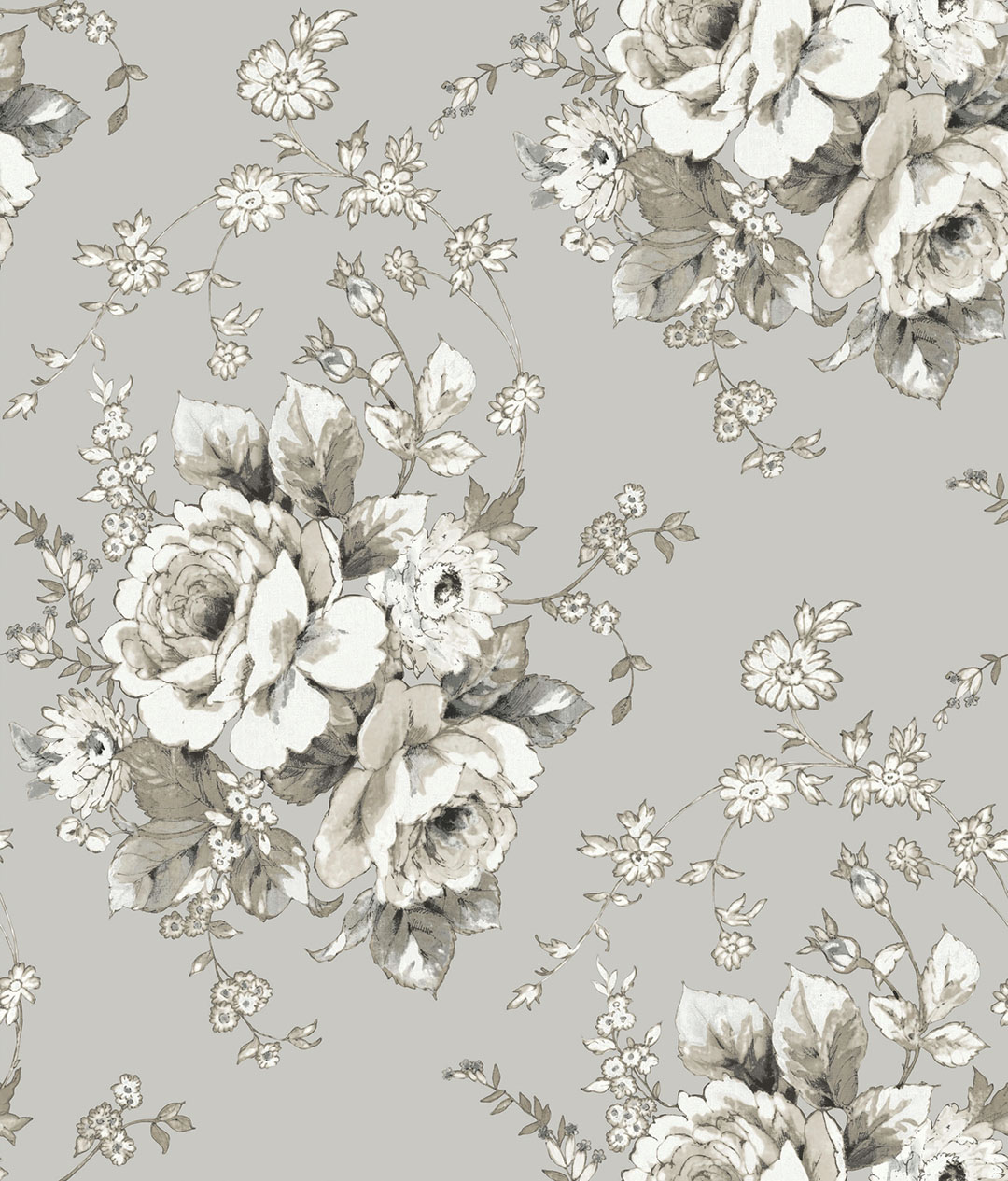
“Manufacturers can now digitally create the beautiful, luxurious look of expensive hand-painted or hand-blocked papers, or embed wallpapers with materials such as mica, glass beads, or even capiz shells to add interest and texture,” says Morgante.
“Over the last decade, we have diversified our product mix by expanding the types of materials we use. We have focused on making our processes more efficient, cost-effective and sustainable, while maintaining our handcraft and luxury appeal,” explains David Berkowitz, EVP of product development at Maya Romanoff, the largest manufacturer of handcrafted wall coverings in the U.S. Their gallery includes wool, burlap, silk and other natural fibers as well as precious metals and wood. Designs are often intricate, requiring an artisan’s touch. For example, papers in the precious metals collection often employ a time-honored method in which metallic leaves are hand applied to a paper backing with chopsticks. An ultra-modern topcoat prevents tarnishing or oxidizing, allowing for easier maintenance.
Textural papers continue to be in demand. The effect can be rustic or refined. In addition to traditional hemp, jute, sea grass, bamboo and raffia, grass cloth might integrate a variety of other materials. Additionally, says K. Tyler, partner and designer at Morgante Wilson, there are woven papers that look like linen on the wall or a variation of silk.
Schemes inspired by traditional designs (dare we mention chintz) have returned, but today’s execution is nothing like the dingy muted tones of yesteryear. Colors are vibrant, often using multiple shades of the same hue. Botanicals have also blossomed into an important trend, inspired by a growing passion for nature and biophilia. Look for splashy leaves and fronds or impressionist-inspired trees and flowers in soft tones. “I am also seeing a change from the crisp, bold large-scale patterns into a more abstract brush-stroked look. But with some of these styles, you’ll need to be aware you won’t have a side match, and each panel is distinguished,” says Christopher Grubb, president of Arch-Interiors Design Group in Beverly Hills.
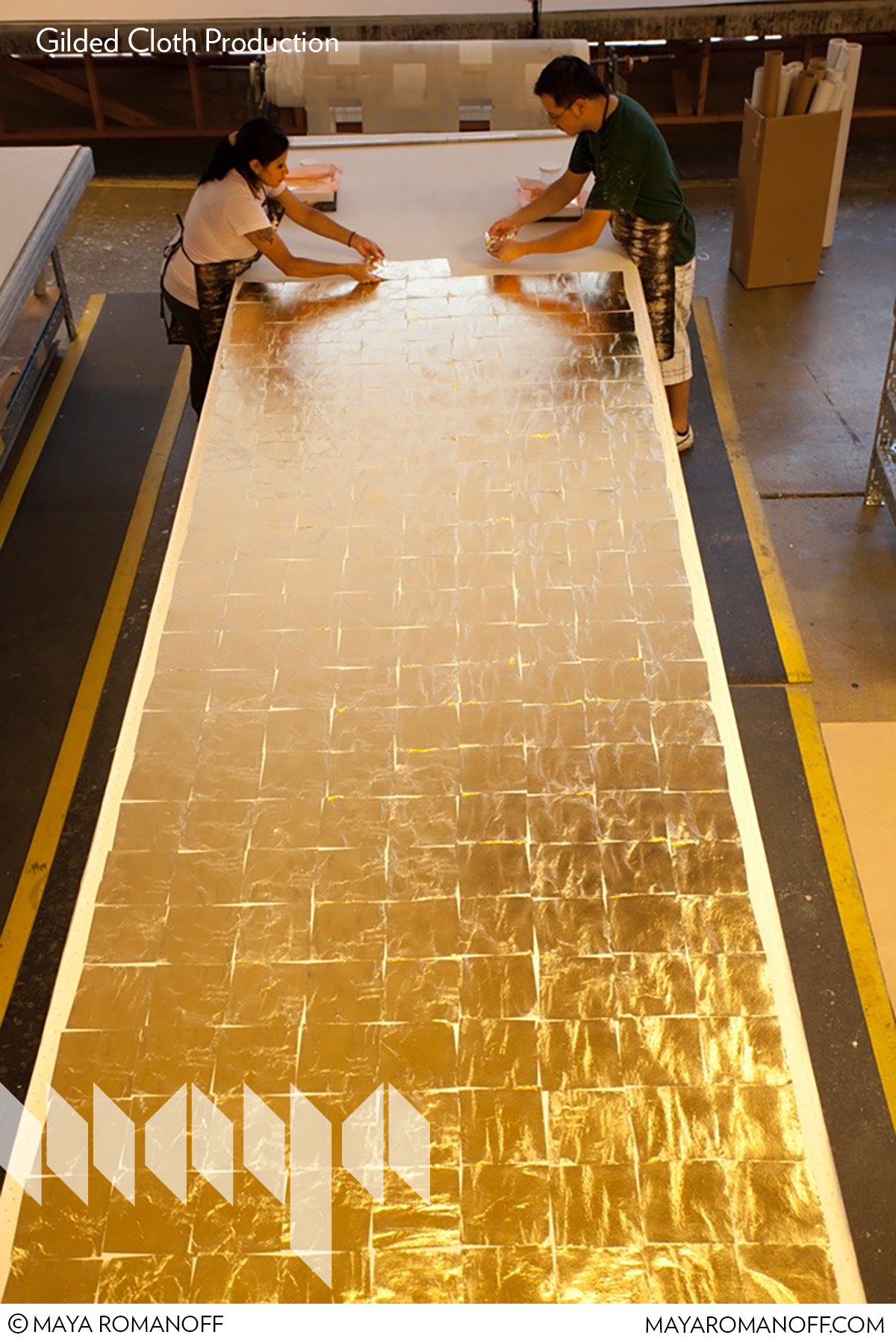
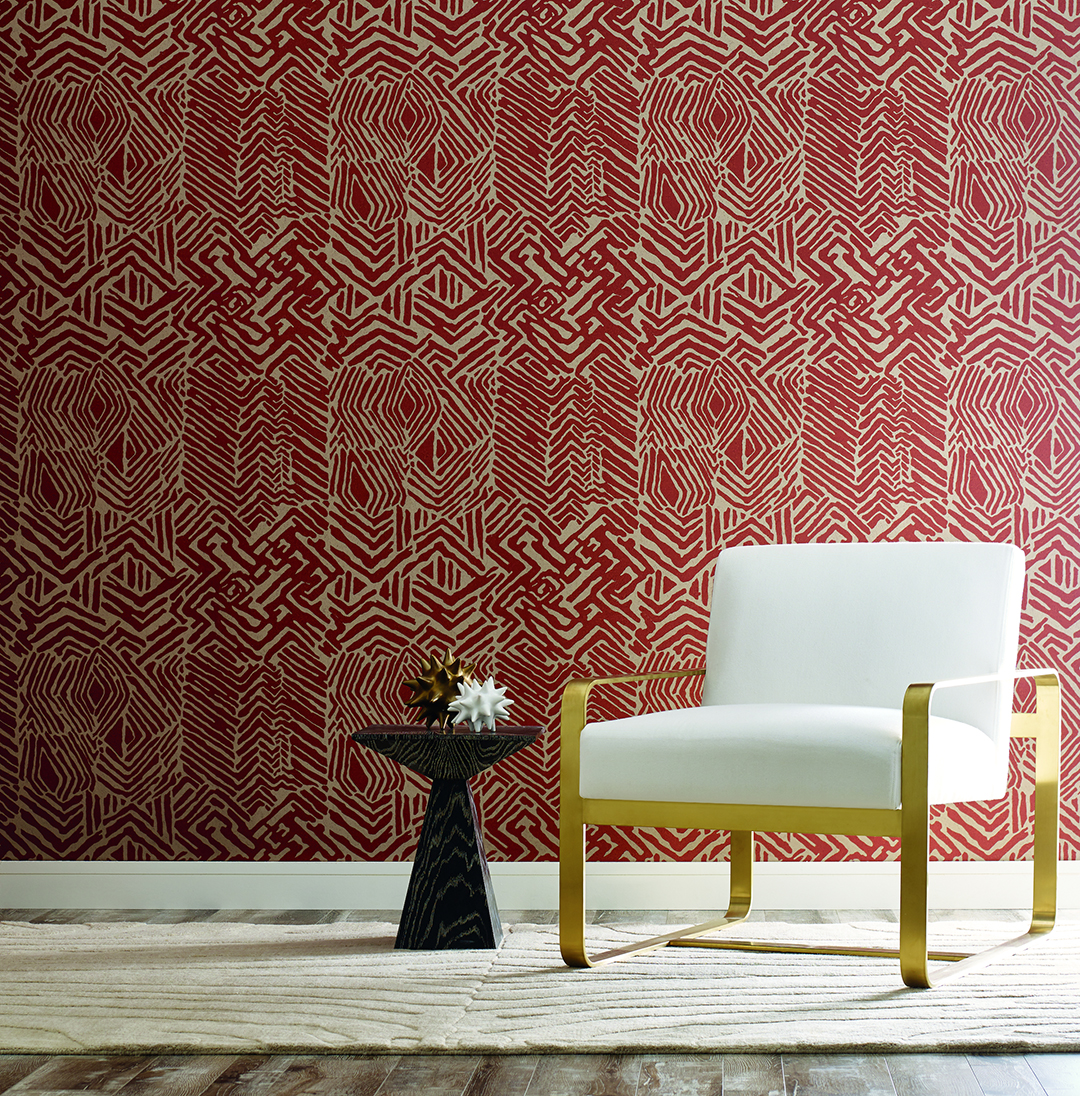
Top left: Precious metal inlaid; Top right: Hand-finished wood veneer, Ajiro Fanfare. Bottom: Tribal Print from Ronald Redding Handcrafted Naturals collection.
Photos of wallpaper production and sample by Maya Romanoff.
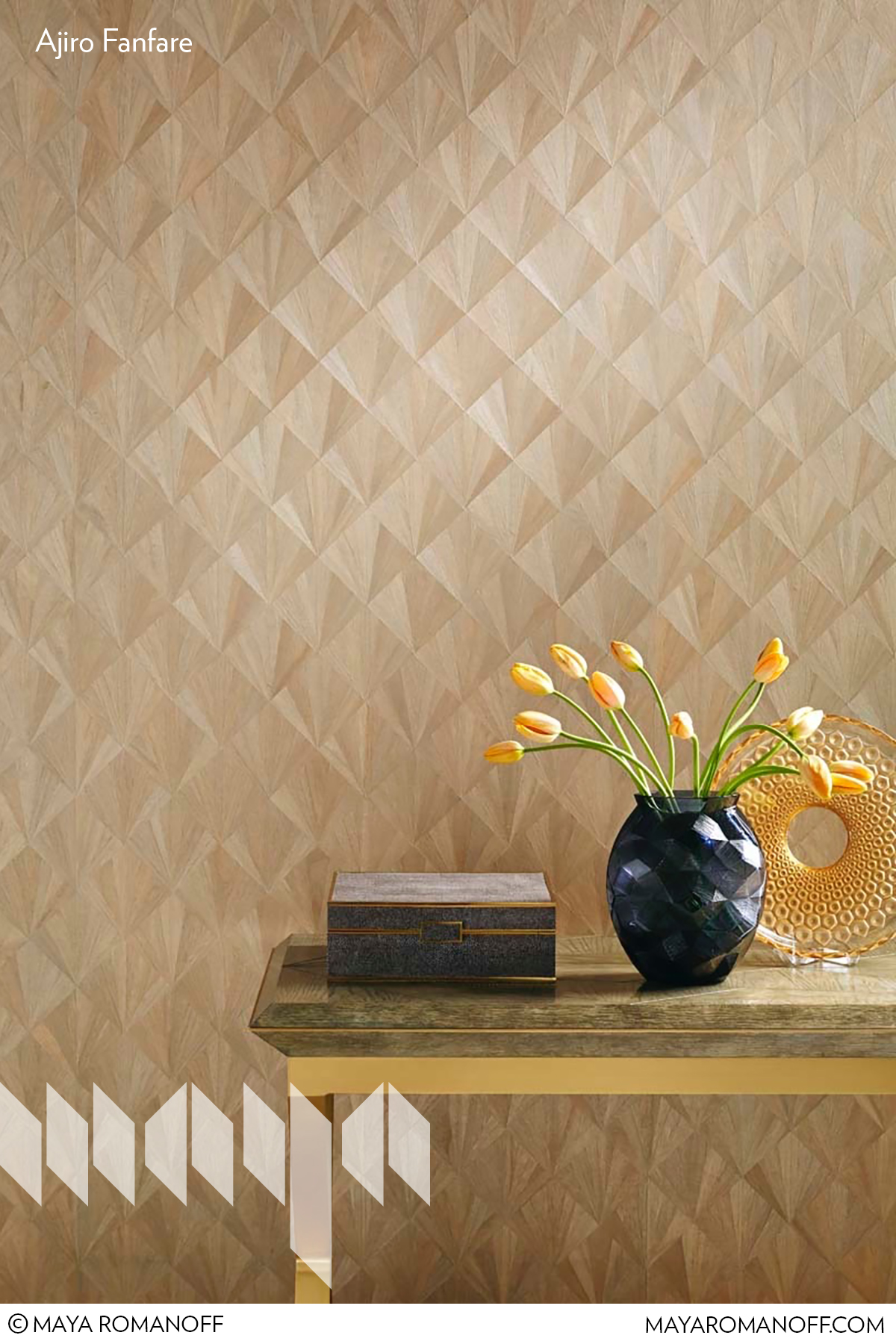
“There are so many things technology has allowed us to do today. We can do wall covering now that looks like the real material, but it’s made out of vinyl,” says Tony Sutton, owner of Est Est, Inc., an award-winning design firm in Scottsdale. Sutton illustrates with examples of wallpaper made from ultra-thin cork or micro-layers of slate. Additionally, he says, “I can take any photograph and then make a giant custom wallpaper out of it.”
Options today range from rugged vinyls to bespoke designs and hand-painted silks with prices that can exceed $1,000 a roll. “Vinyls are typically less expensive, but super durable. Many of them are rated for commercial use and sold in wider widths,” says Mondi.
“I am a huge fan of using vinyl wall coverings,” says Grubb, who does commercial as well as residential projects. “The color palette is enormous. There are silk and grass cloth looks, wovens, textures and embossed patterns. It’s incredibly durable and easy to maintain.”
“On the other end of the spectrum, you would find hand-painted wall coverings. There are custom made, high-end and truly artisan products that typically replicate a faux finish or mural. In between is where most wallpapers reside. Digital printing is typically very affordable and can often be done on different background materials,” says Mondi.
Design is only part of what consumers want. Sustainability and ease of use are equally important. Upmarket to DIY consumers demand sustainability, which includes efforts to minimize the footprint of manufacturing, observes Miller. Beyond no VOCs, ozone-depleting chemicals or cadmium or mercury, York Wallcoverings also uses water-based inks and coatings and smokeless, non-polluting inks. Additionally, there is a push toward sustainable materials, including cork, natural grasses, leaves, wood veneer, even glass beads made from recycled windshield glass.
Ease of Use
“Now every level and type of wallpaper concerns itself with ease of application and removability,” says Miller. “Even nonwoven unpasted backings used most often by designers remove in full strips.”
A potential game-changer for the industry came with Tempaper, which has revolutionized the concept of peel and stick papers. There is nothing stodgy about these designs, which run the gamut from traditional classics such as chinoiserie to glam to bohemian. They also tap into creations by well-known designers such as Bobby Berk and Genevieve Gorder. The company also offers panels and murals as large as 8 feet by 10 feet. Some designs such as Arabella, part of the Zoe Bios collection, are inspired by artists such as Jean Michel Basquiat.
Founded by twin sisters Jennifer Matthews and Julia Au, Tempaper is an ideal solution for someone renting, as designer Jewel Marlowe discovered. “Recently we rented a high-end beach home in Jamestown, Rhode Island, for 10 months. This was just long enough that I wanted to add some personality to some of the spaces in order for it to feel like home. However, I was very aware that whatever I used needed to be quickly removable. Luckily, I found some beautiful Tempaper designs to personalize and beautify some of our rooms,” she shares.
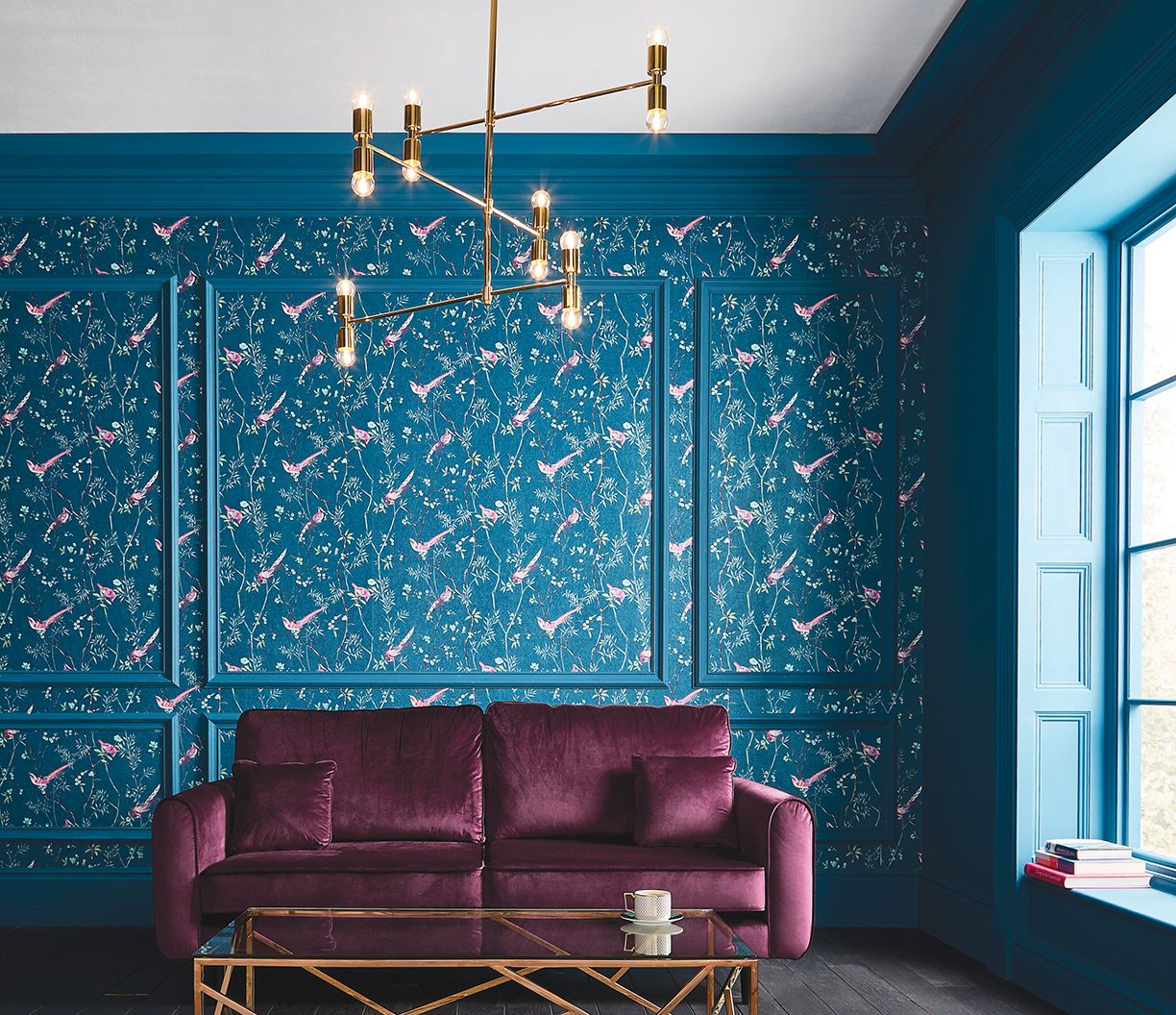
Birds are flocking to wallpaper this year. Graham & Brownexpresses this theme in Tori Teal.
Photos courtesy of Graham & Brown.
New additions to Tempaper’s line up include designs from Wright Kitchen and holographic decals from Bobby Berk. This year, the company also introduced a collection of vinyl floor rugs.
Tempaper does seem to add a “now you see it, now you don’t” ability to wallpaper’s extensive resume, making it a truly magical material.
